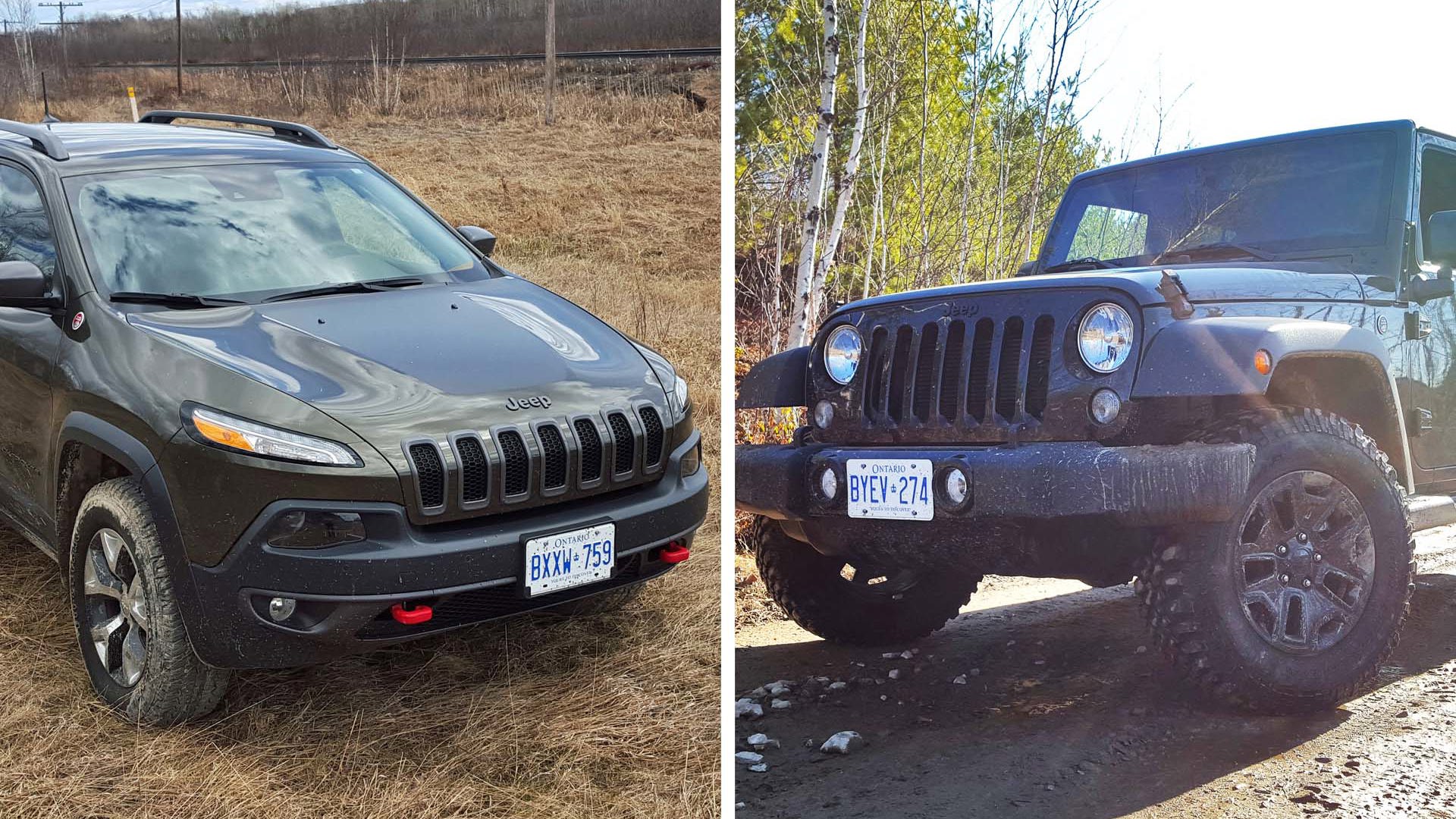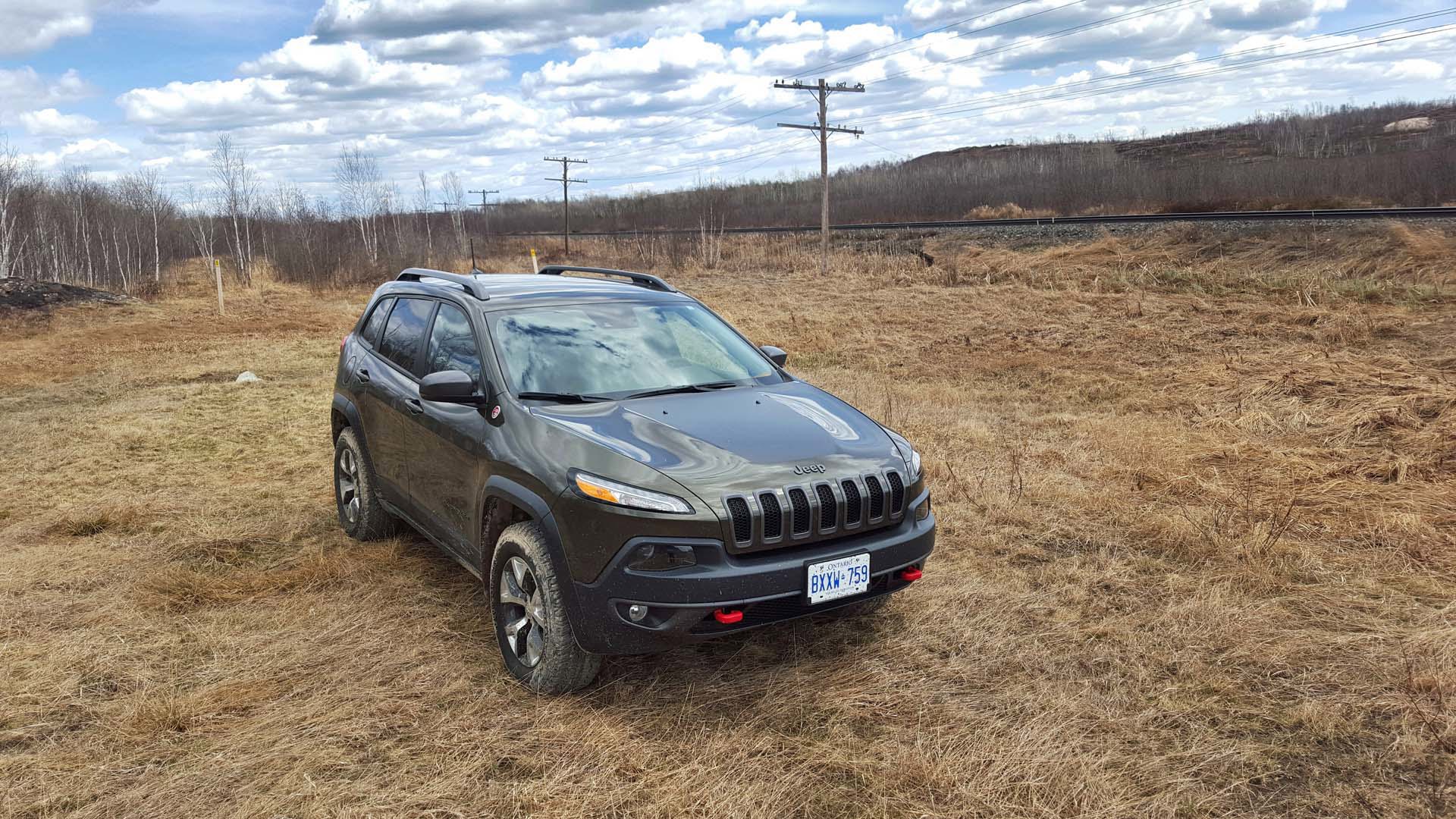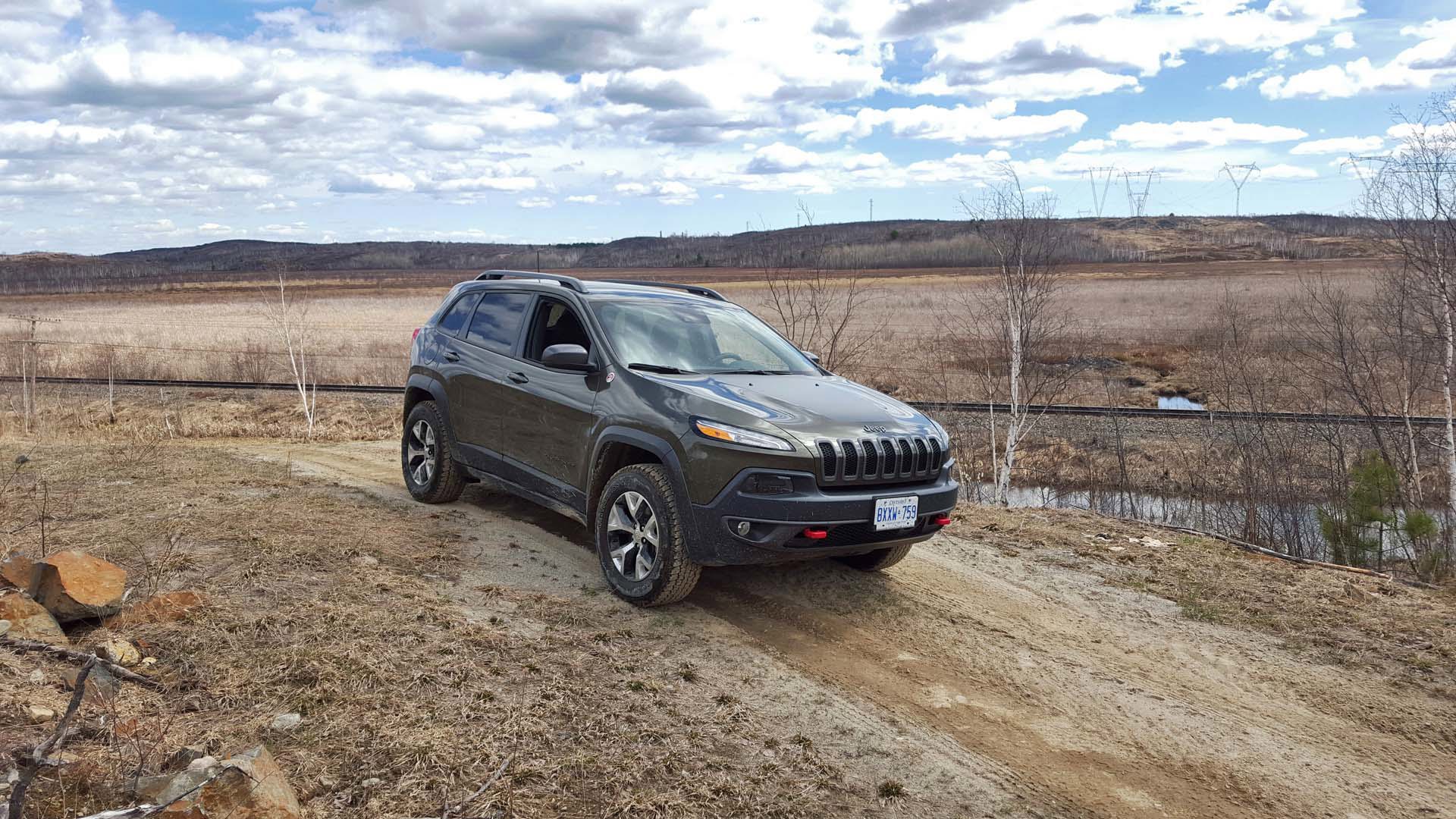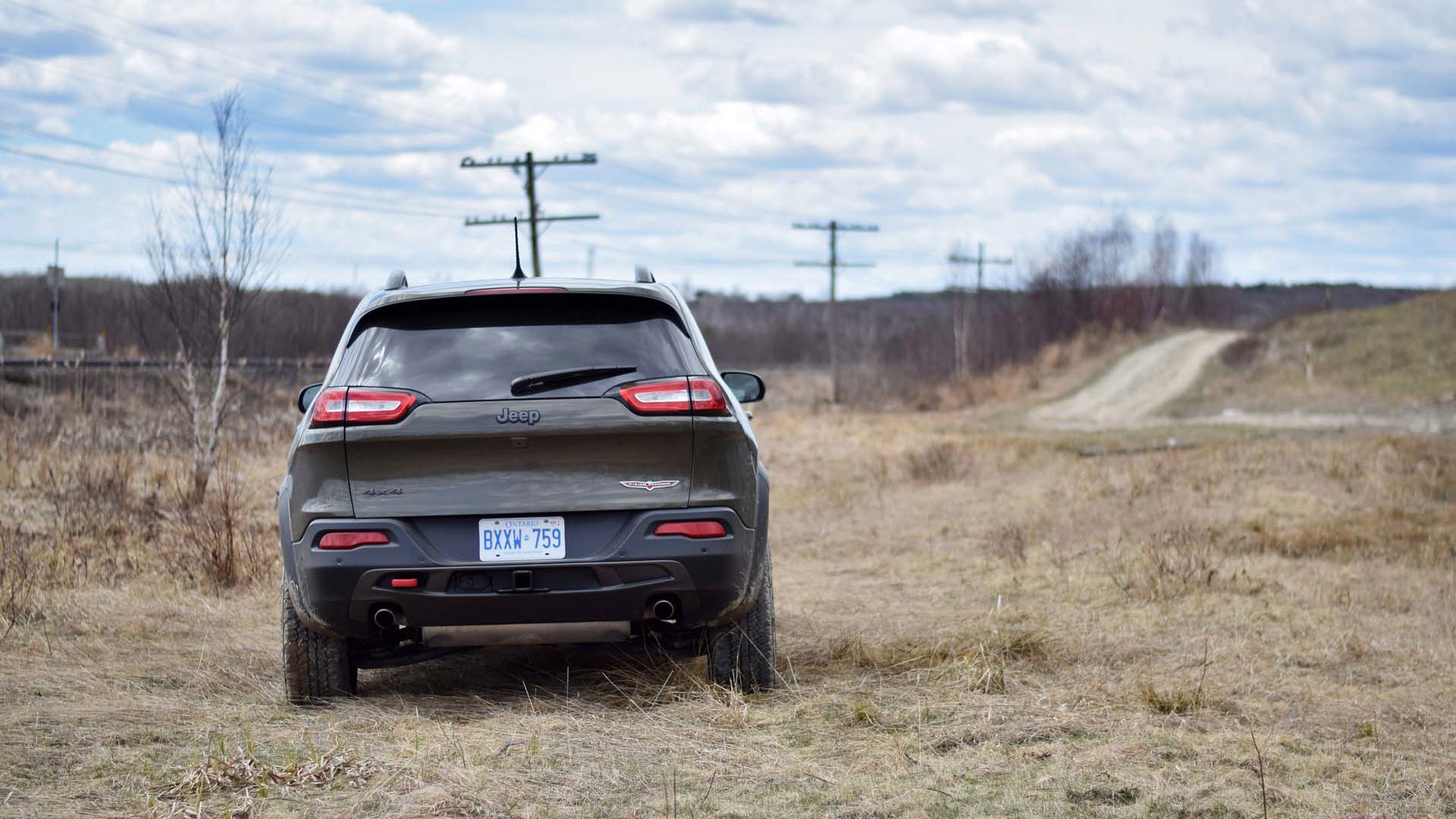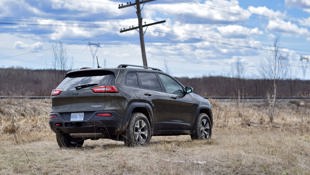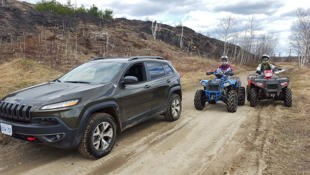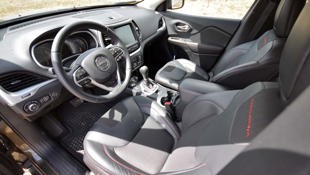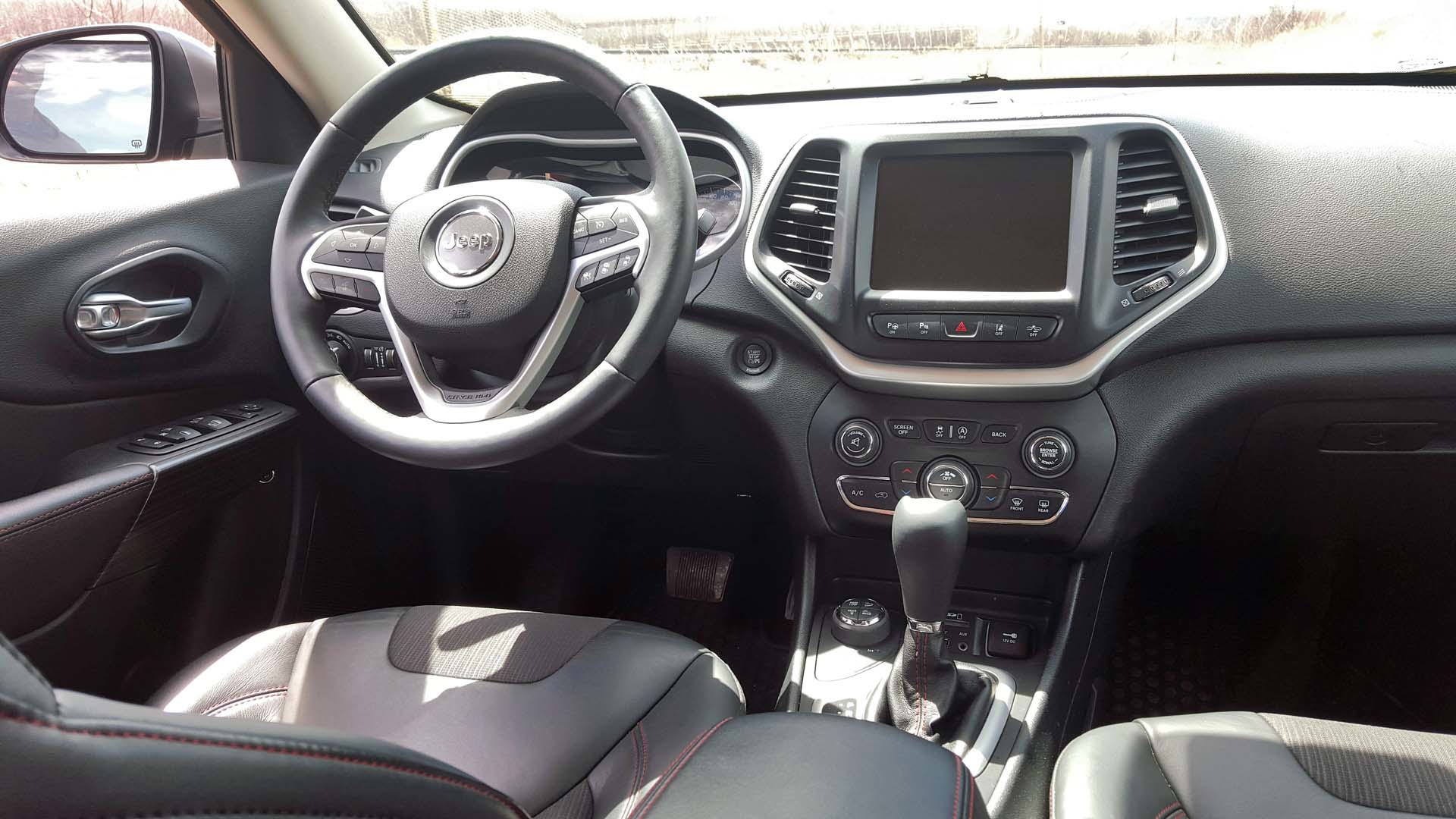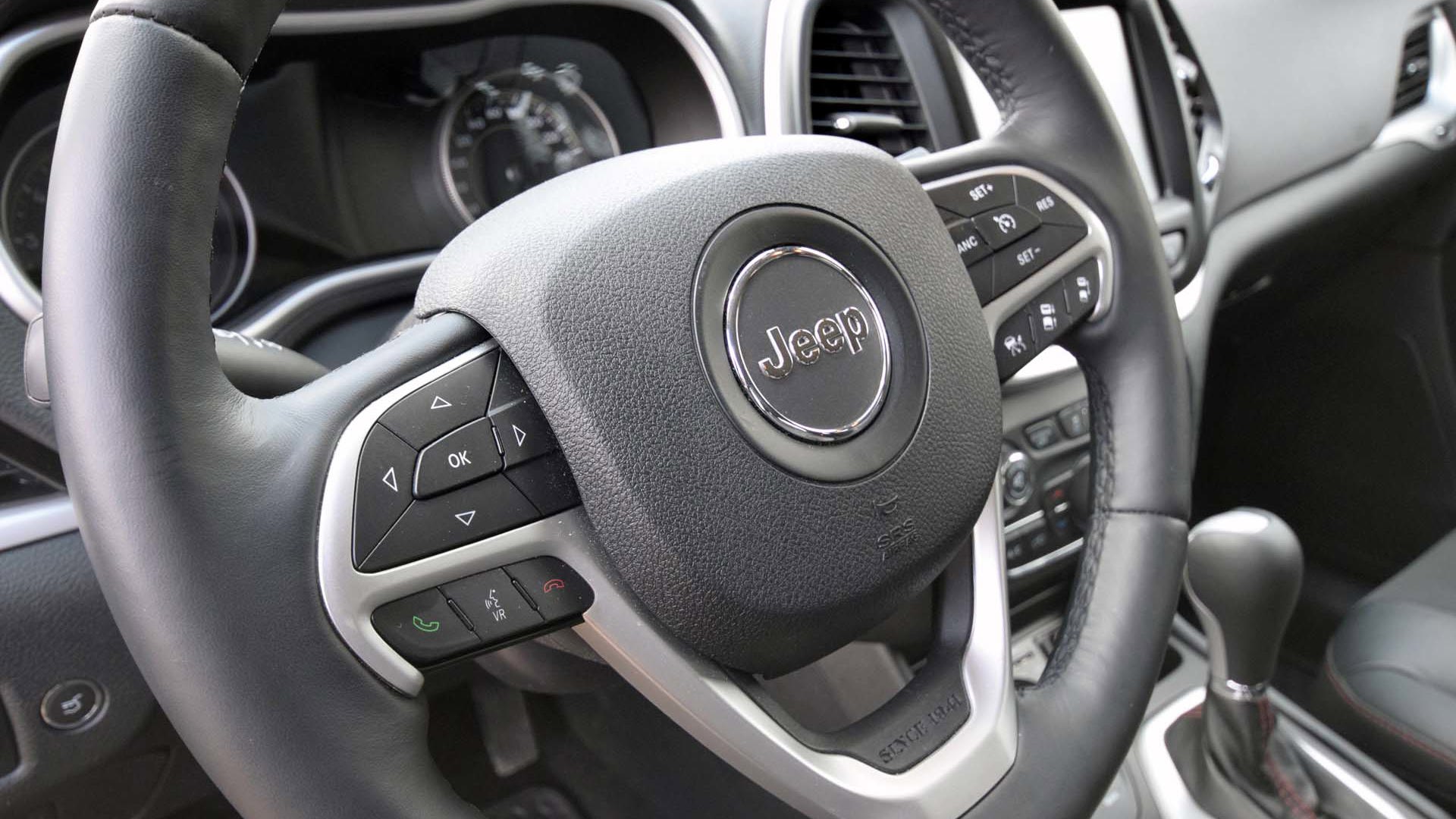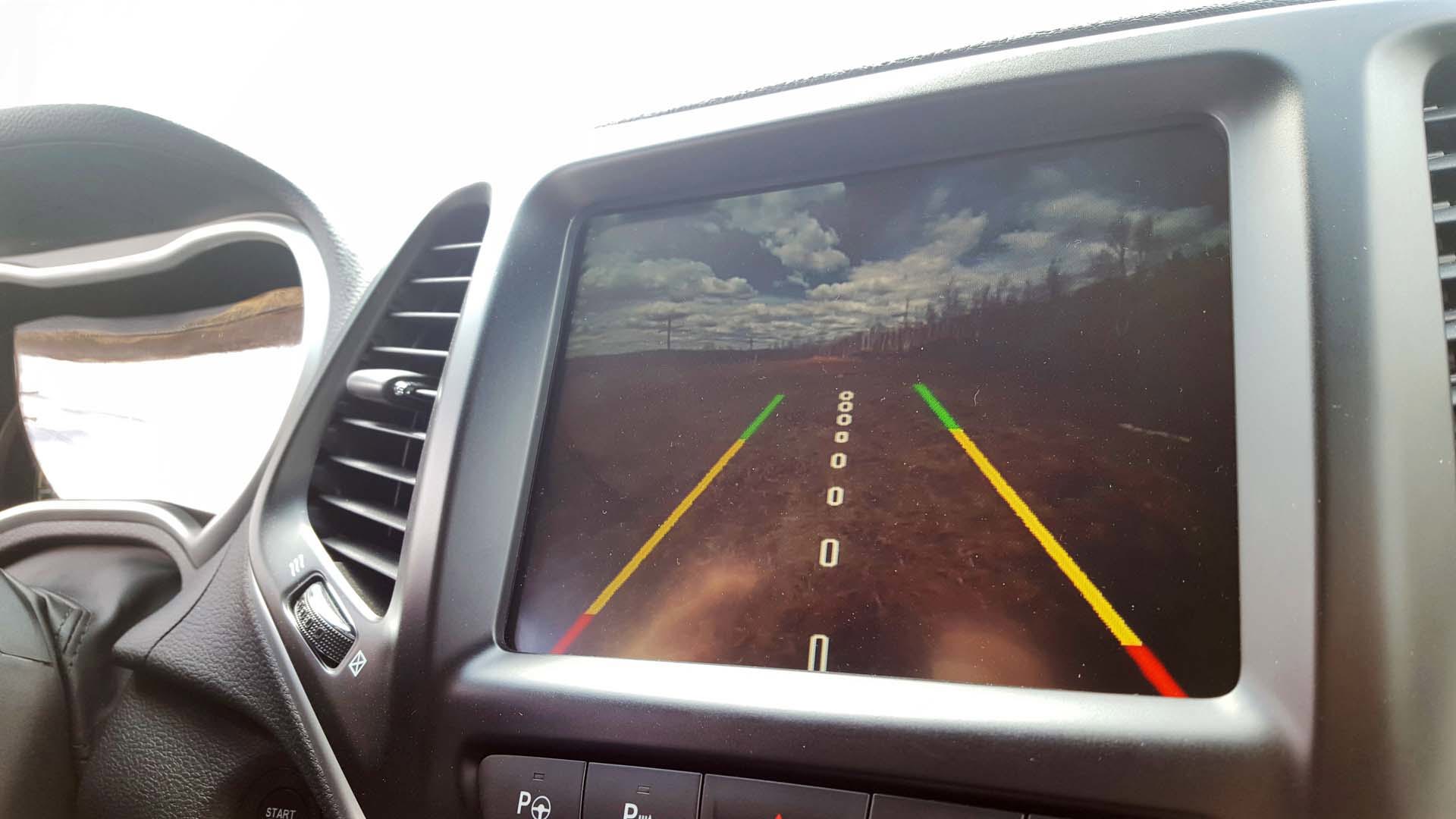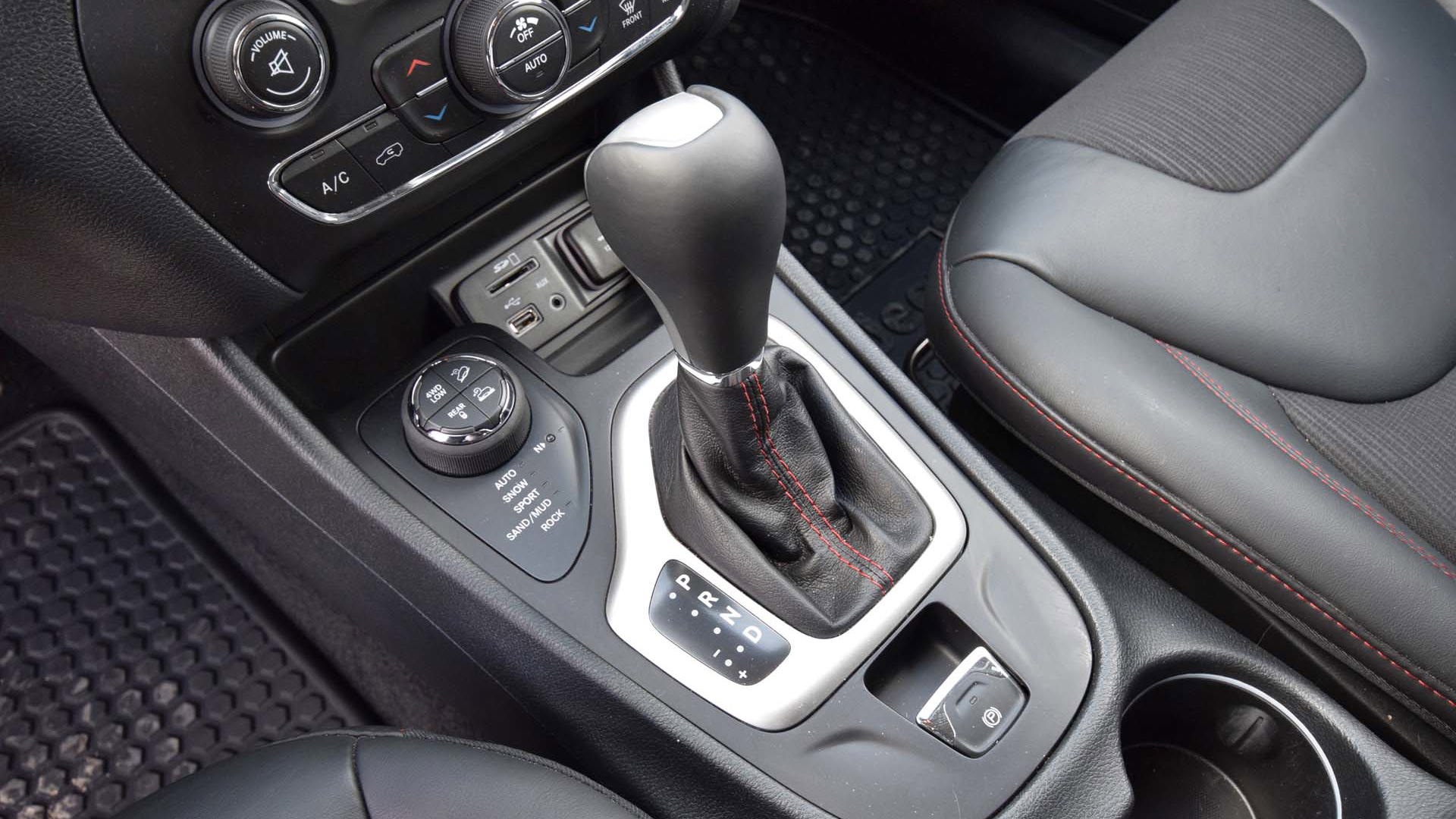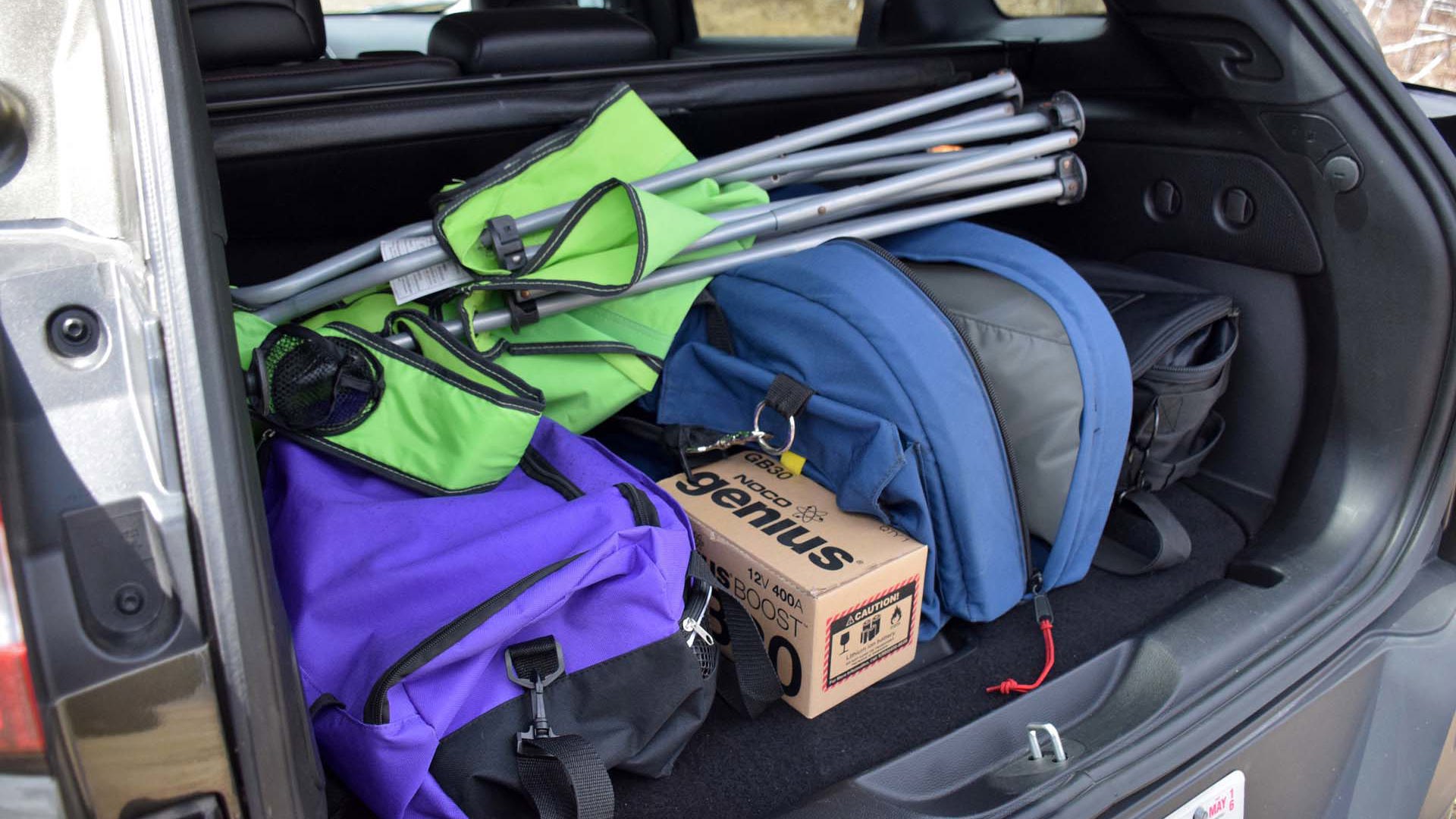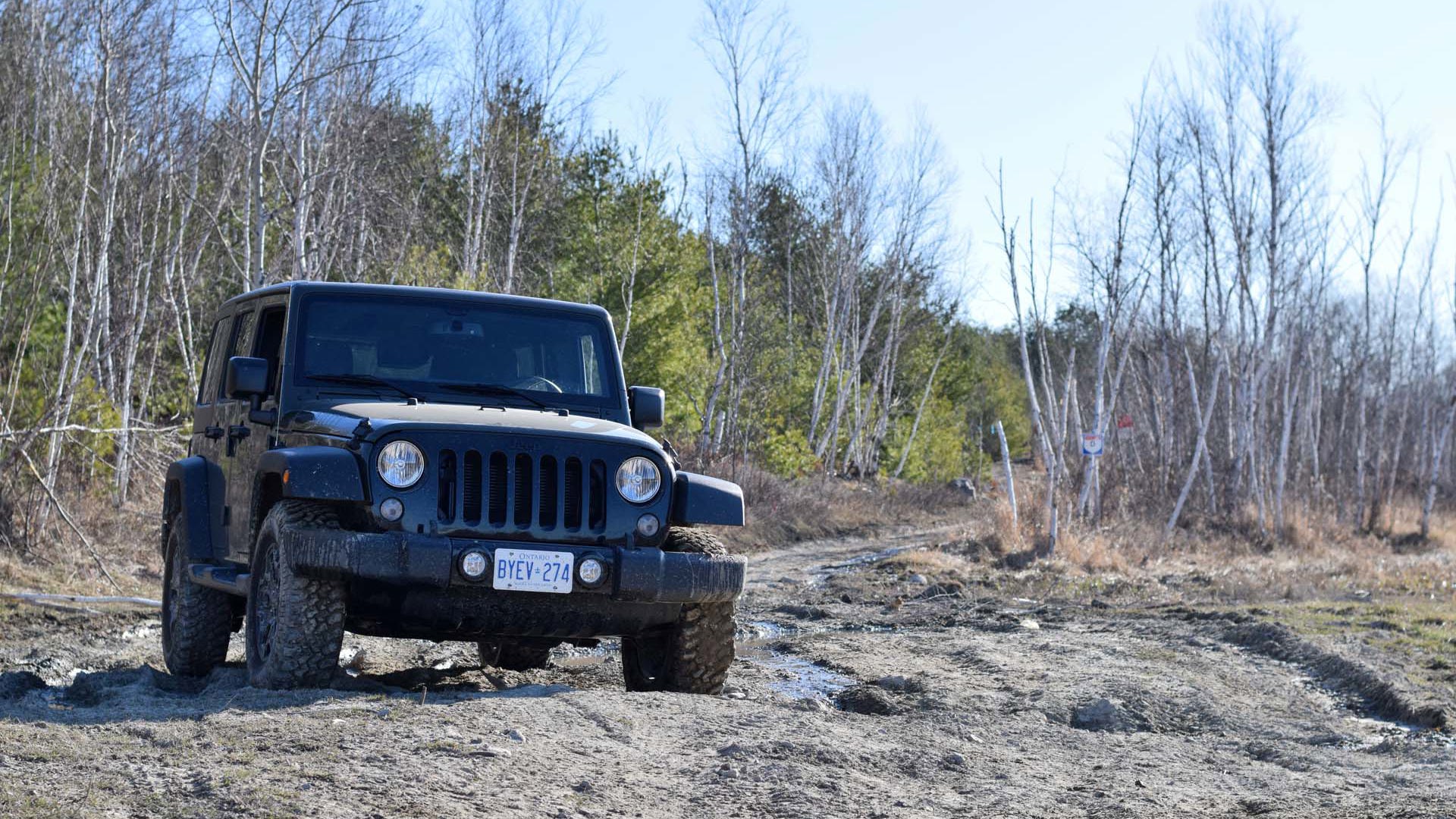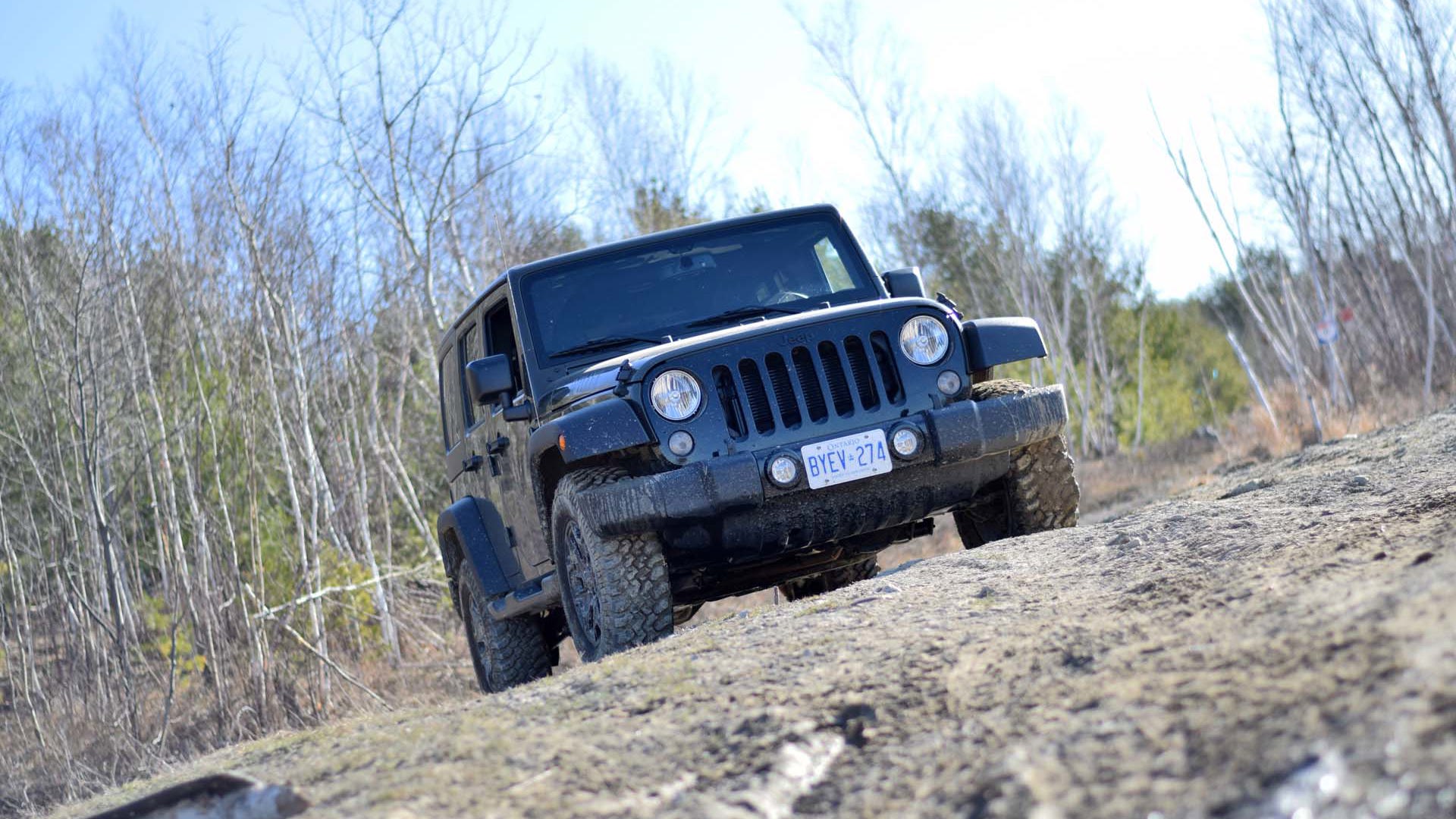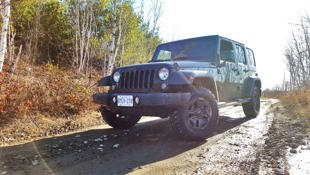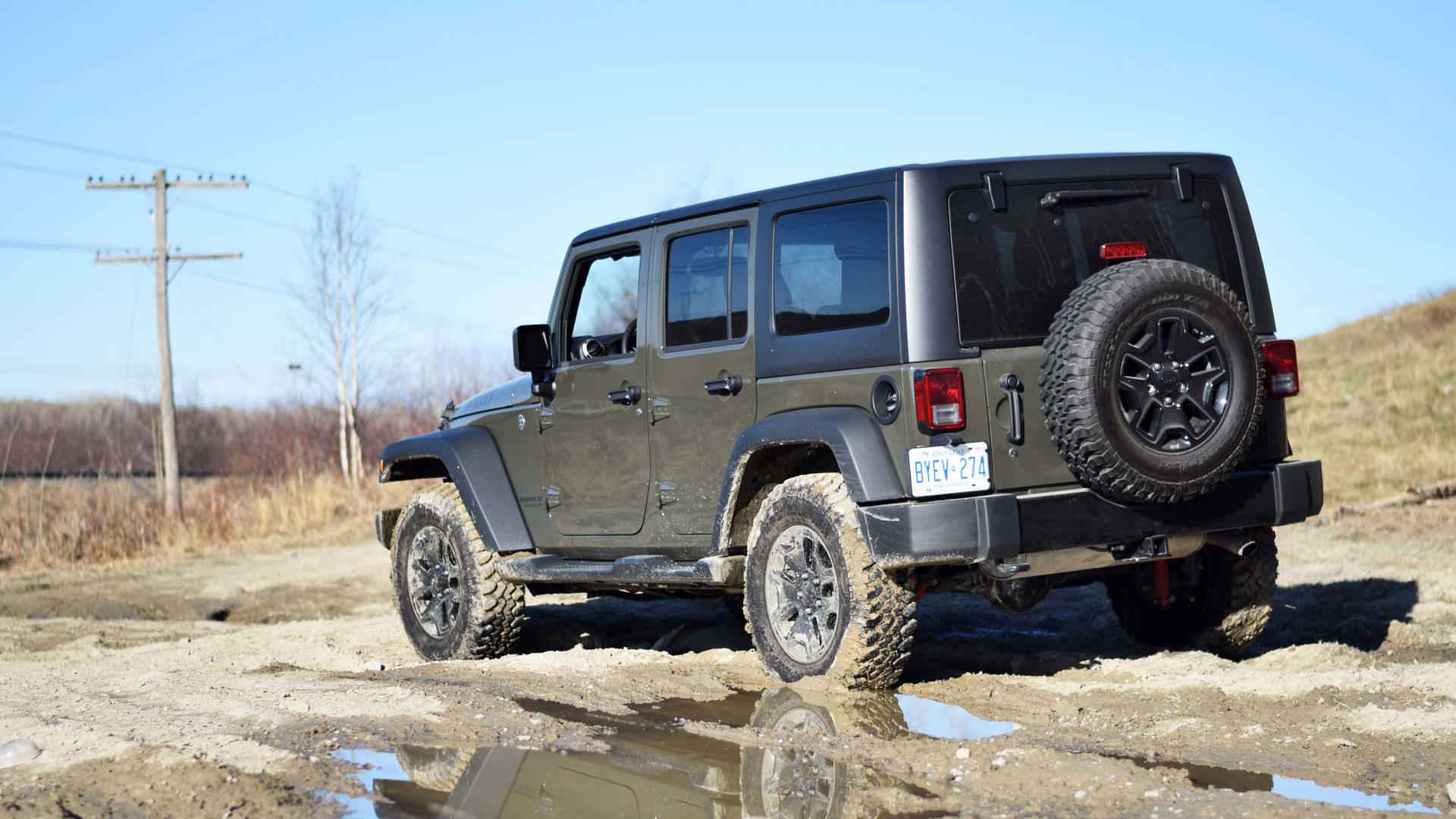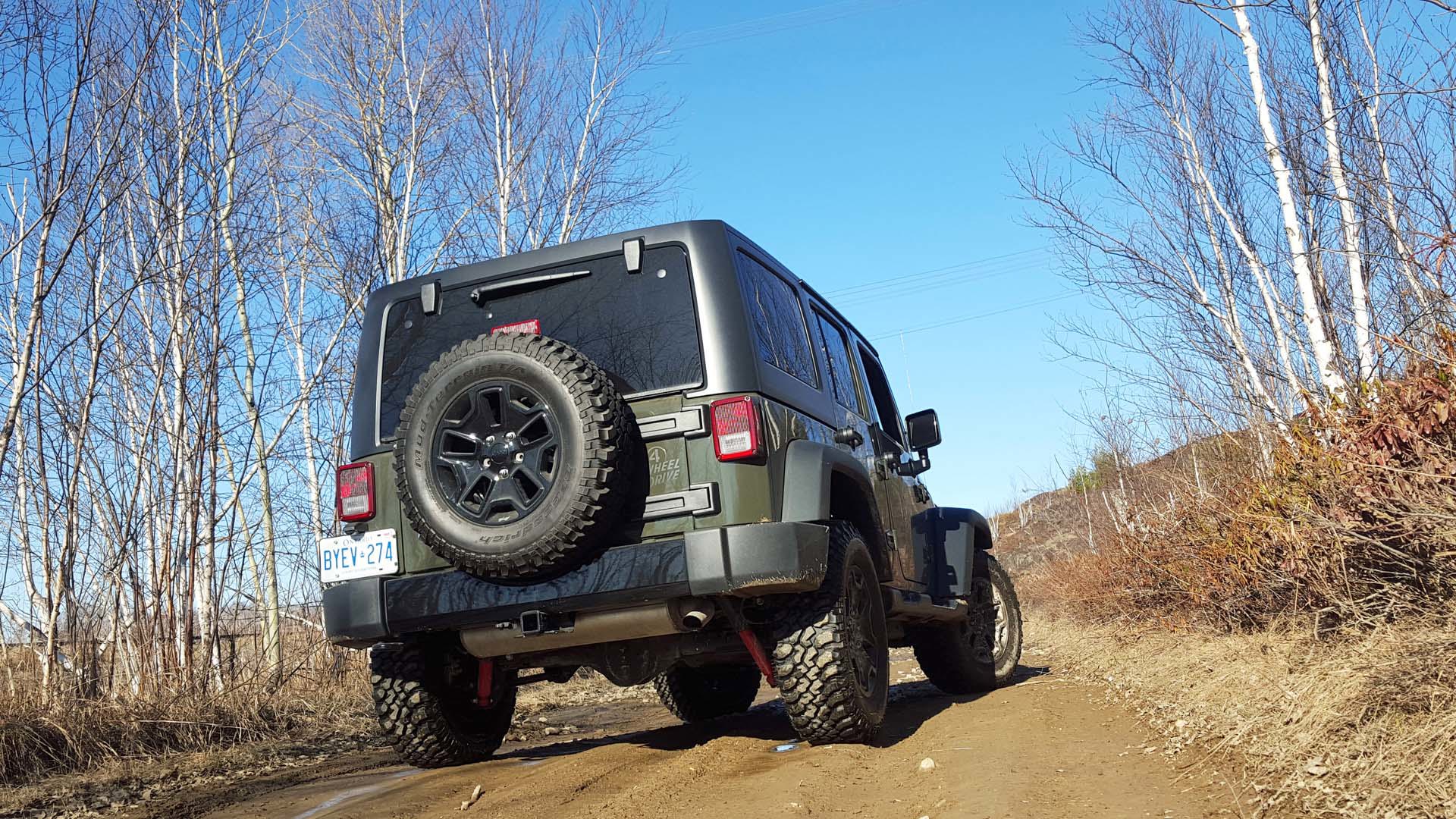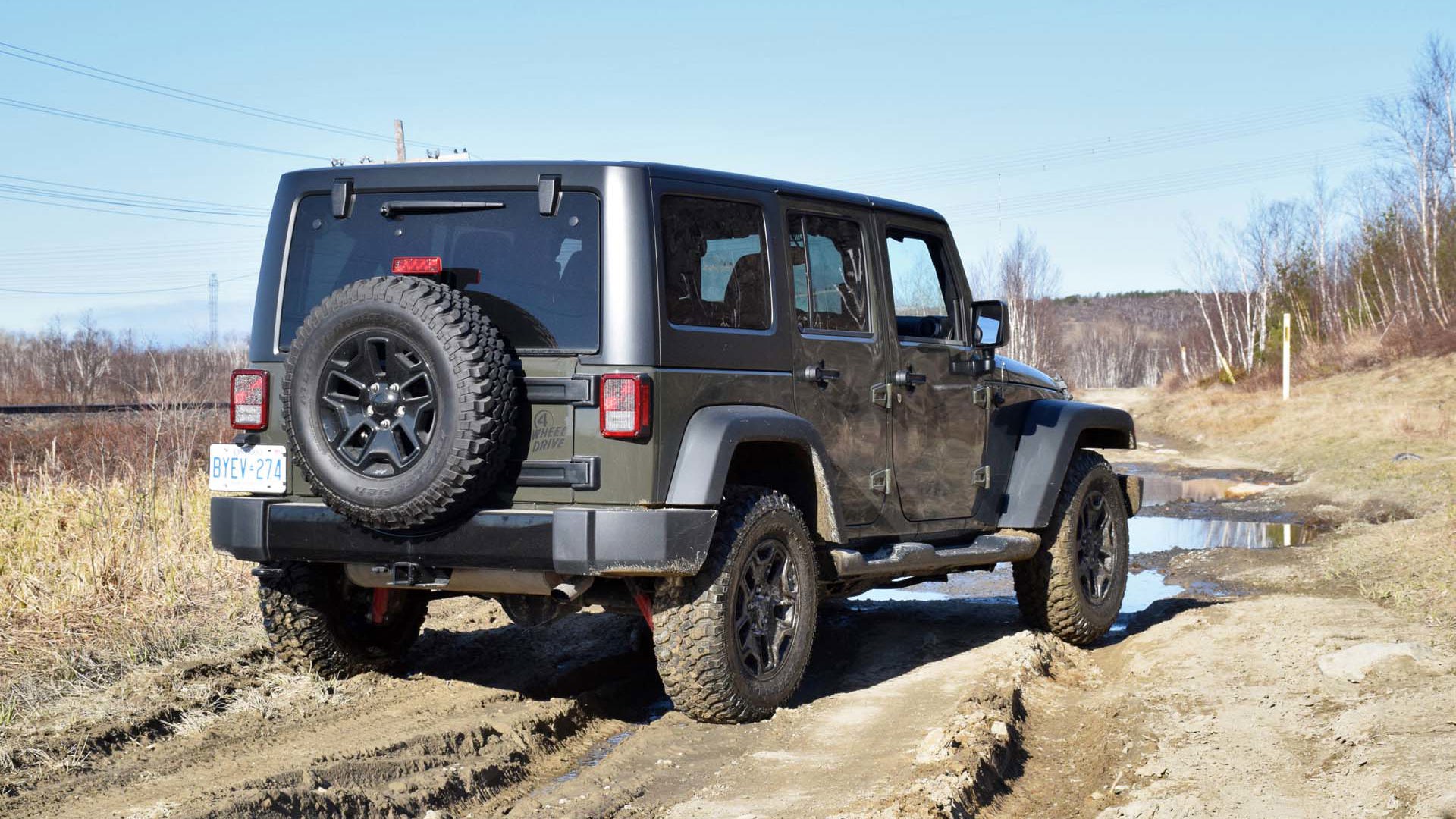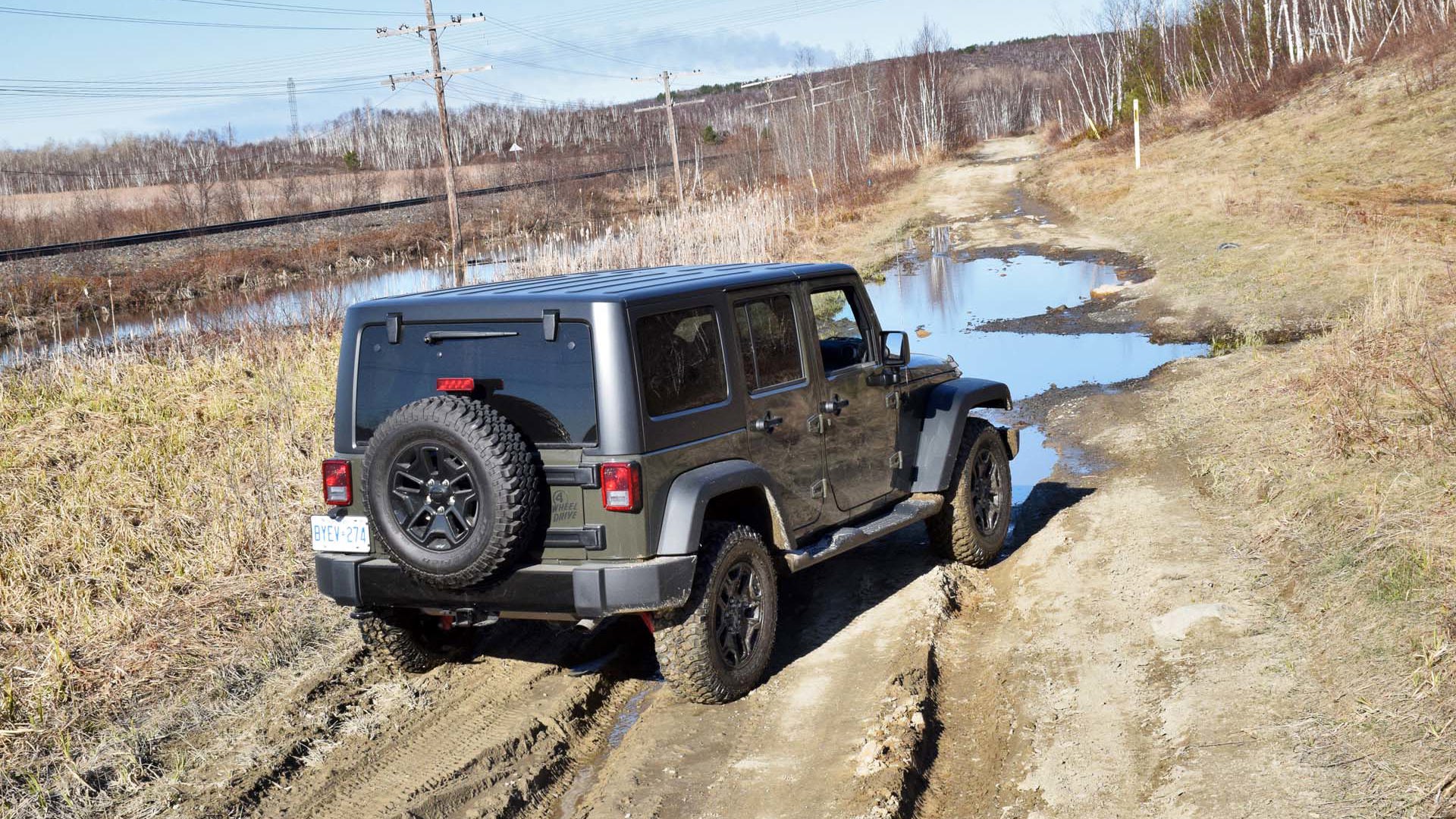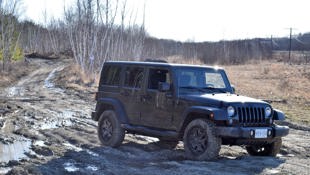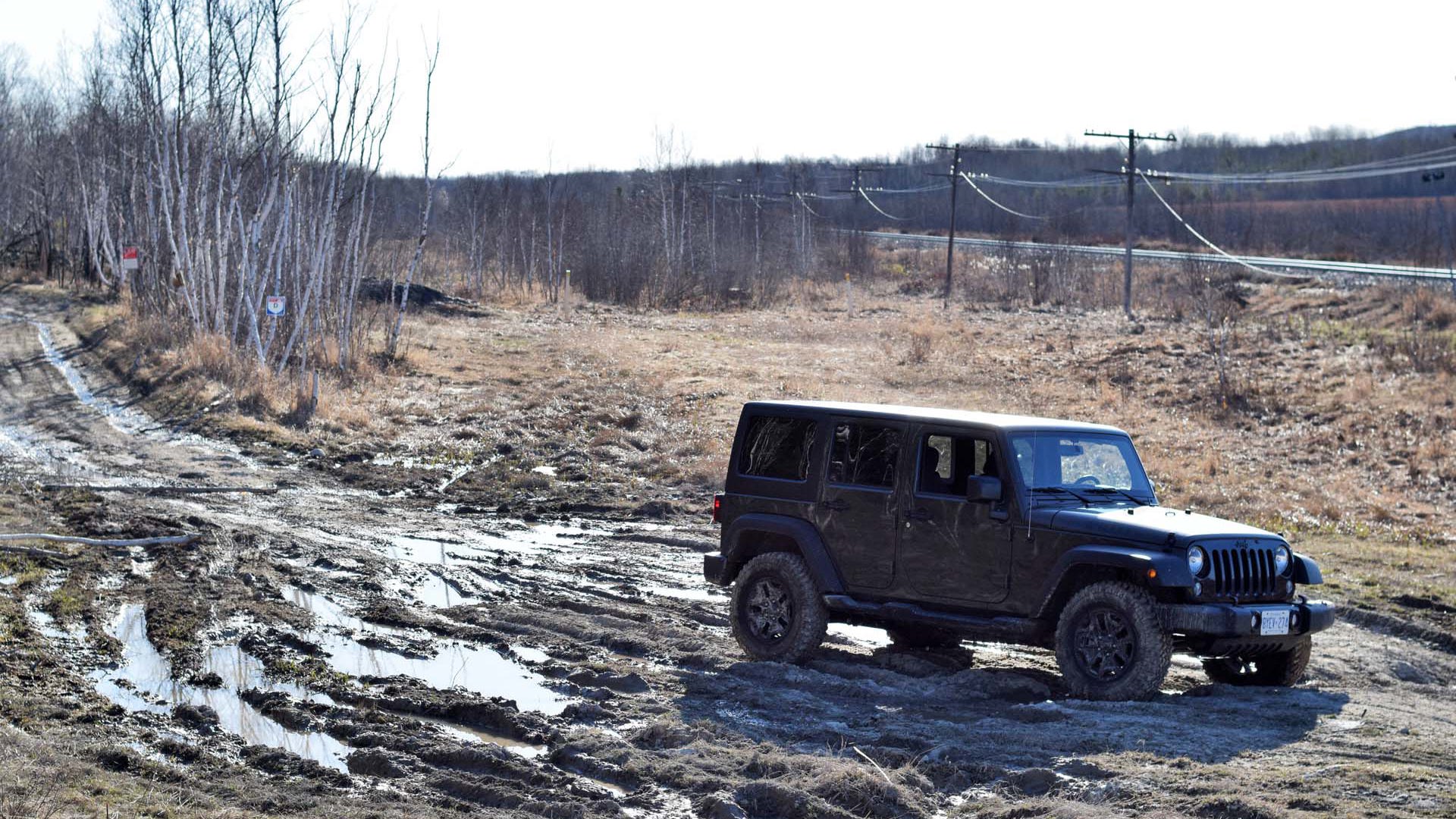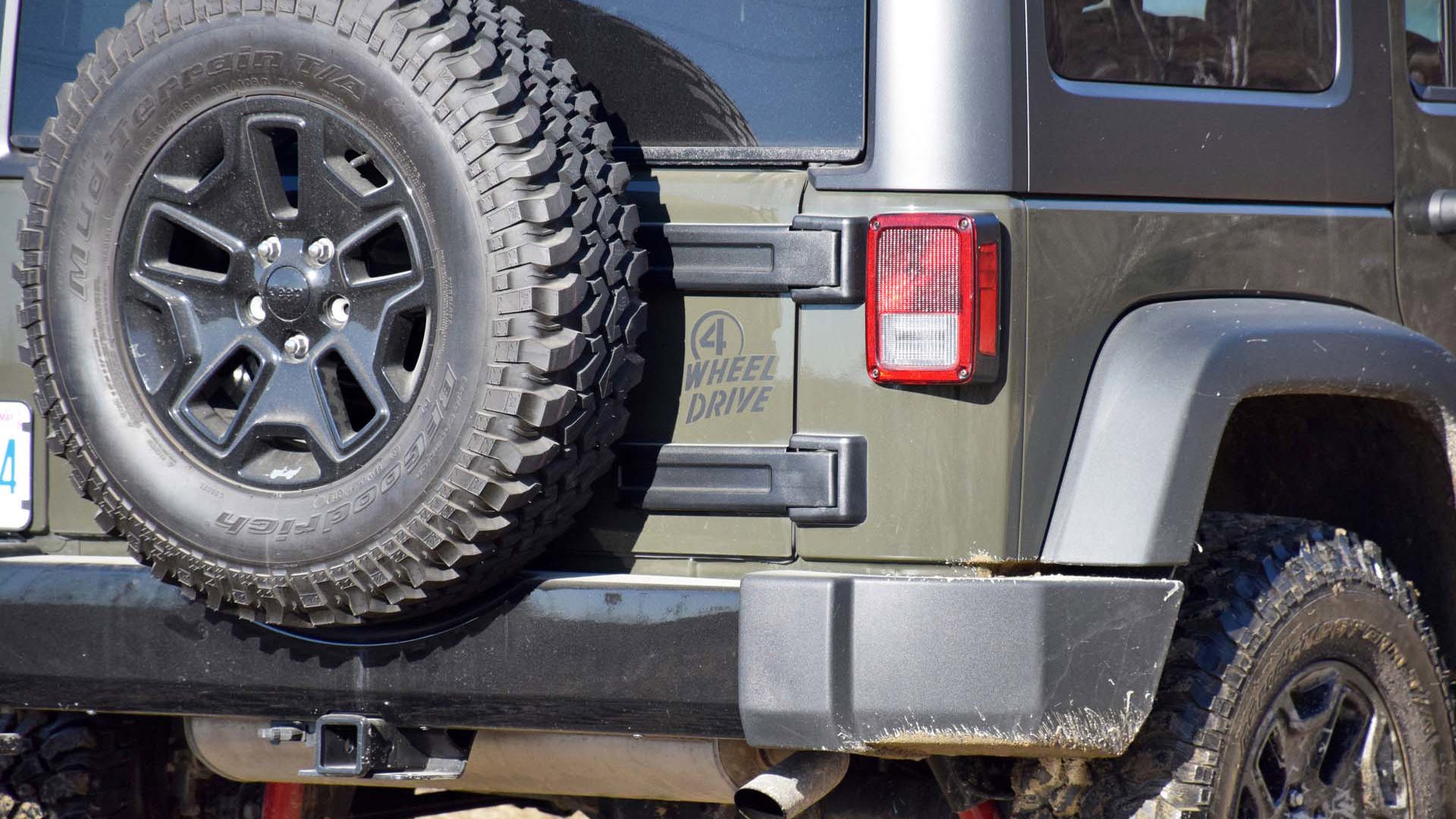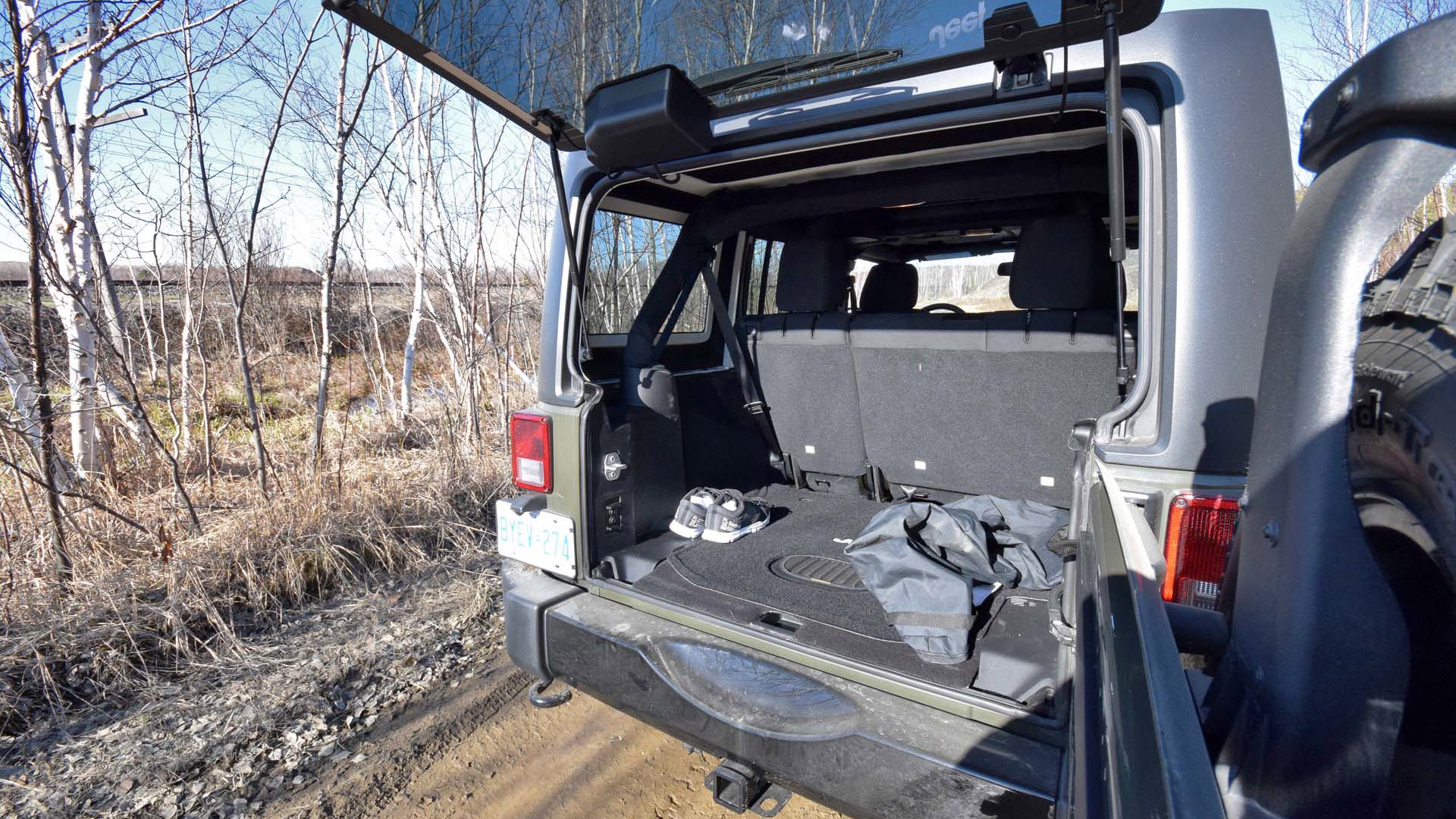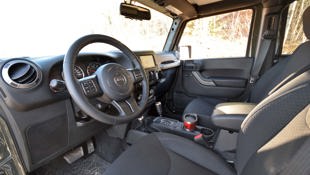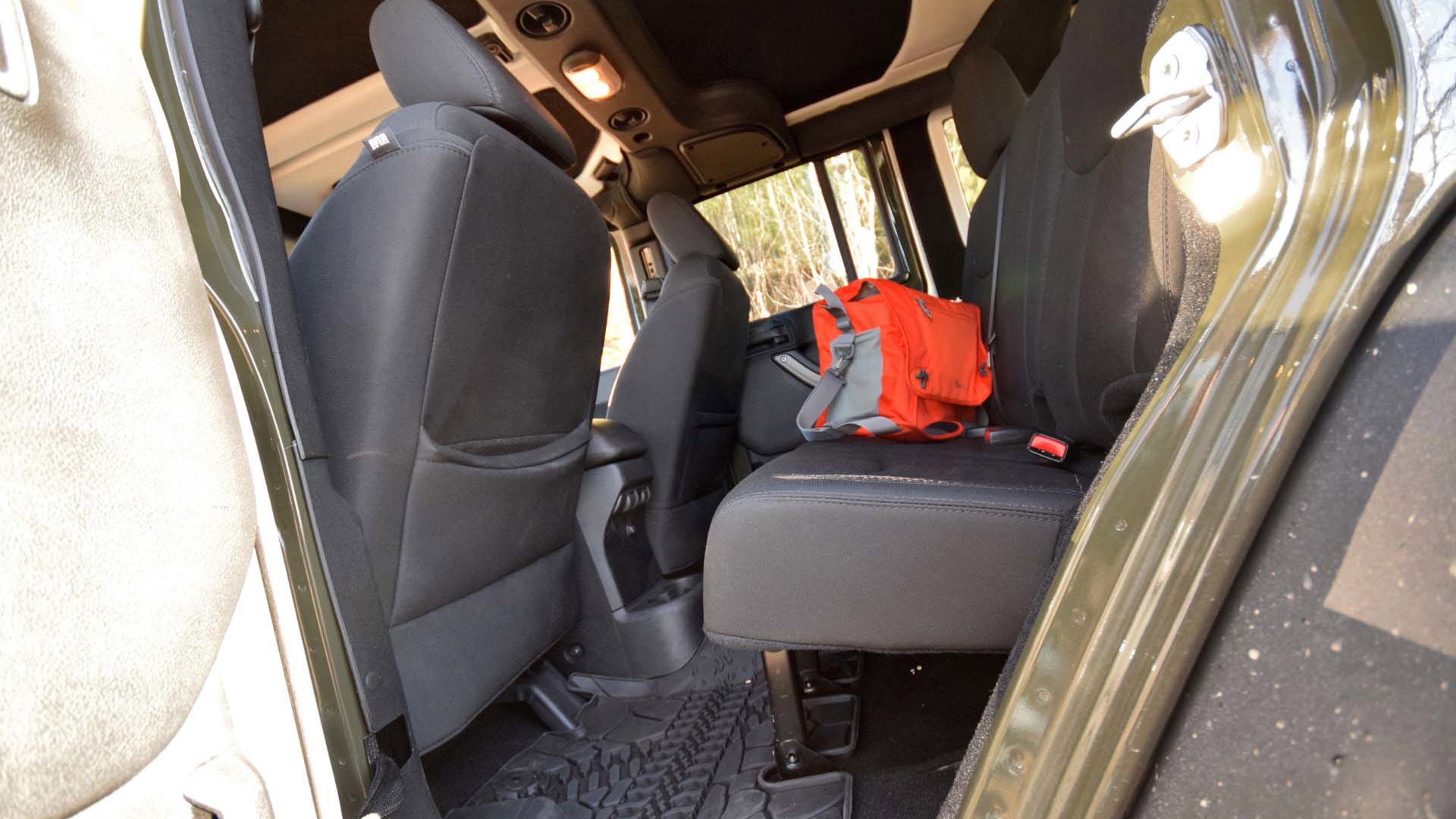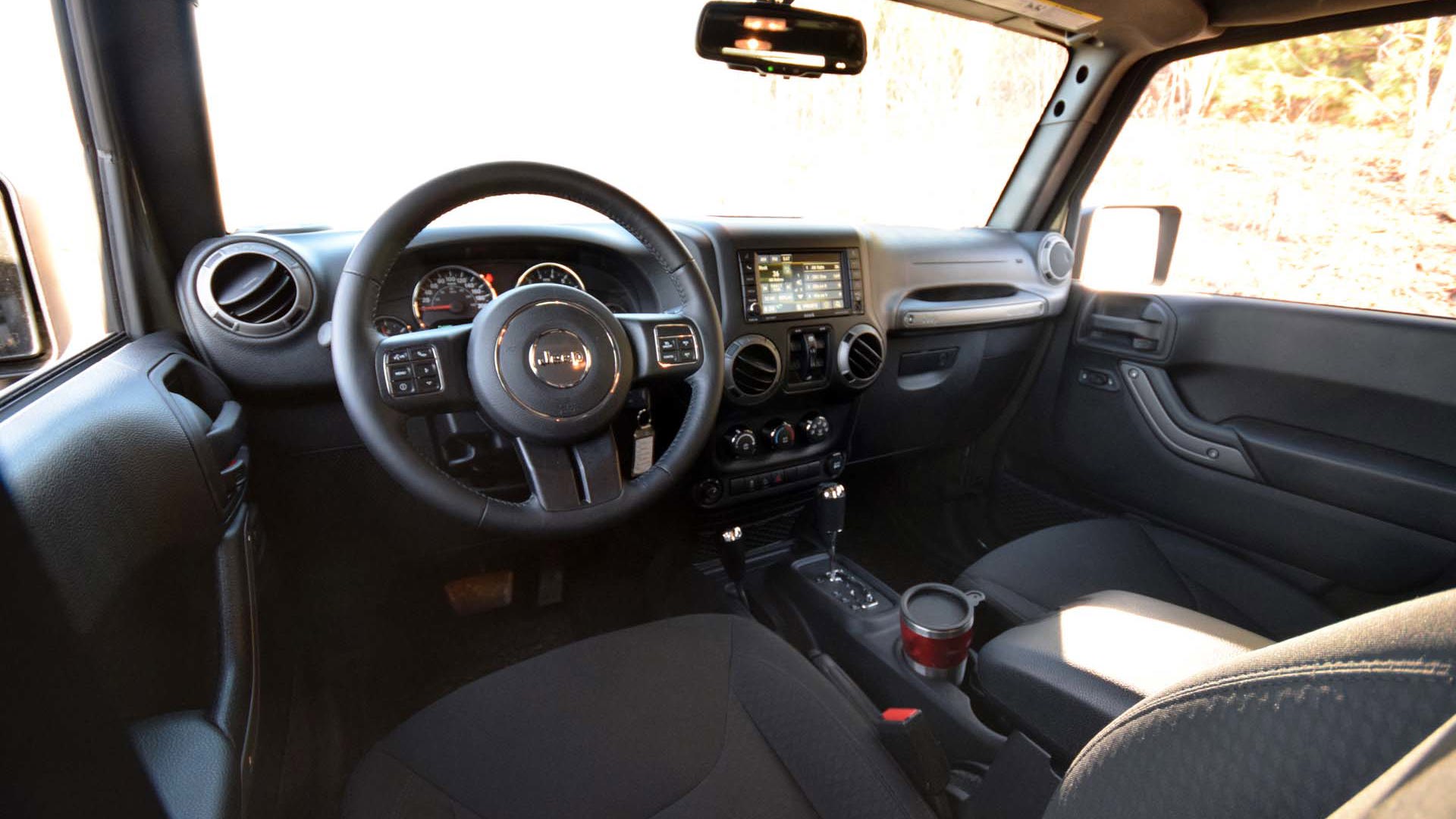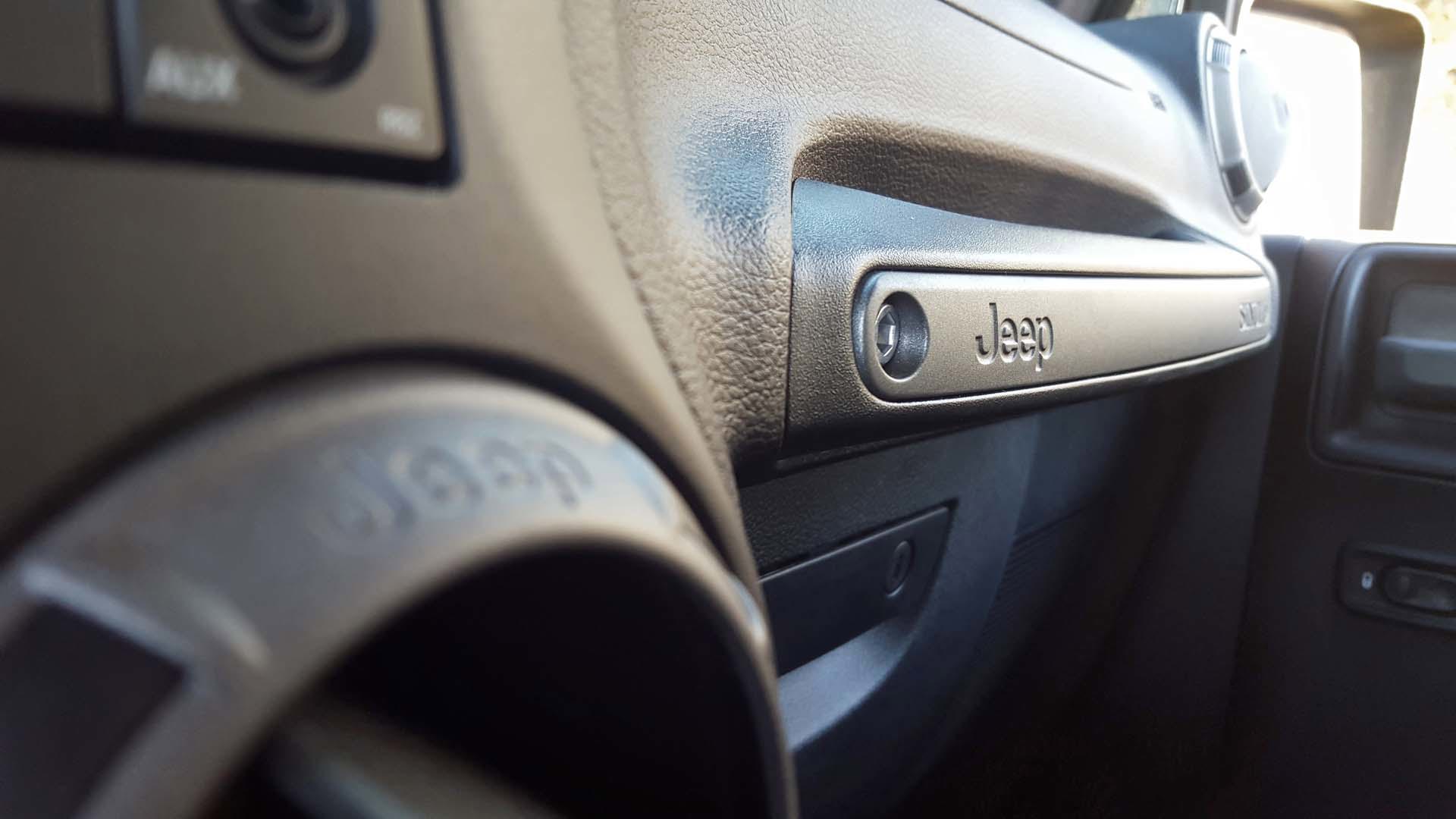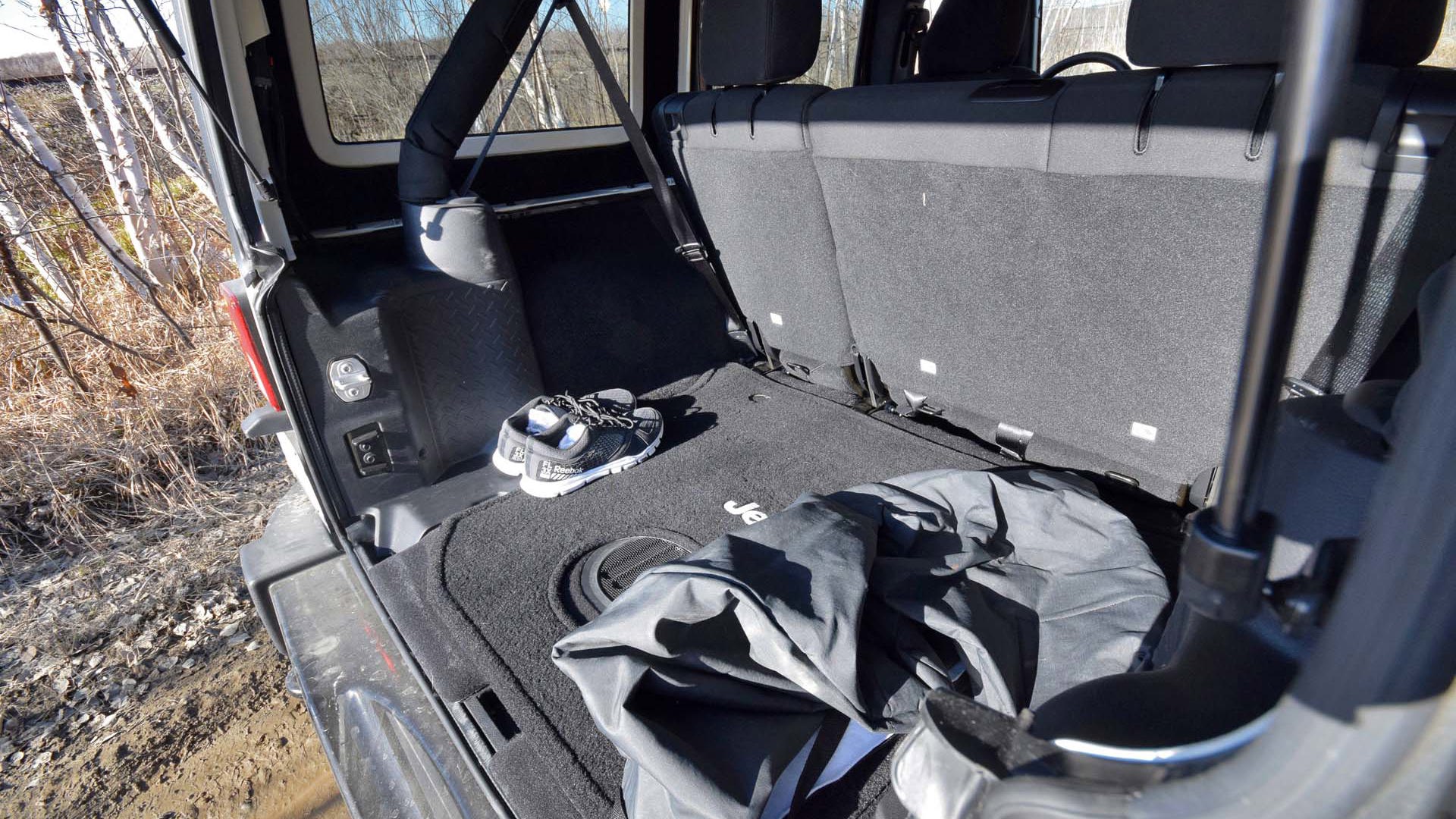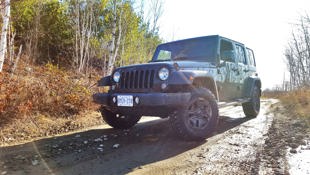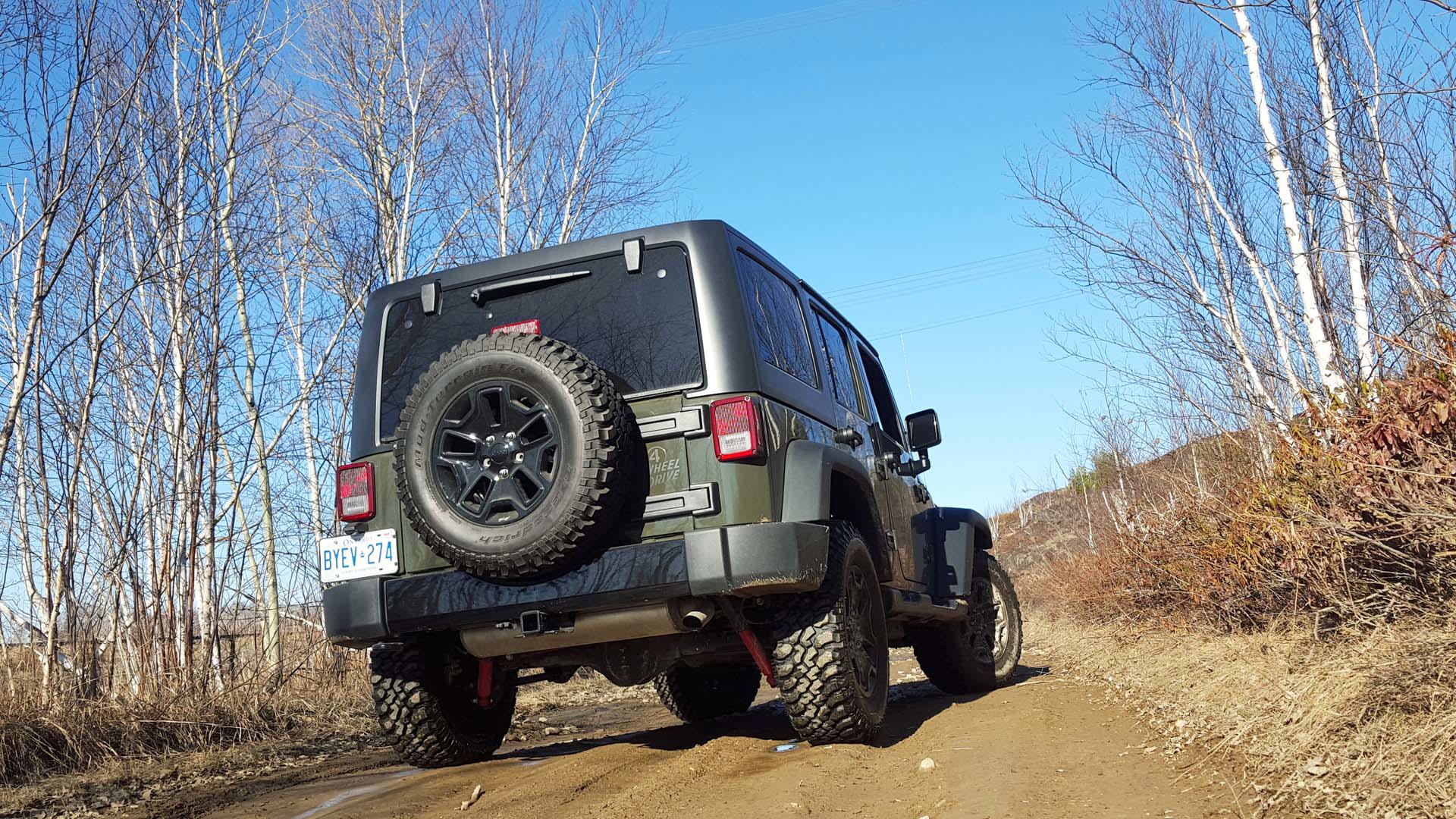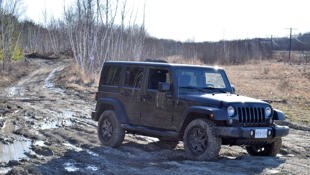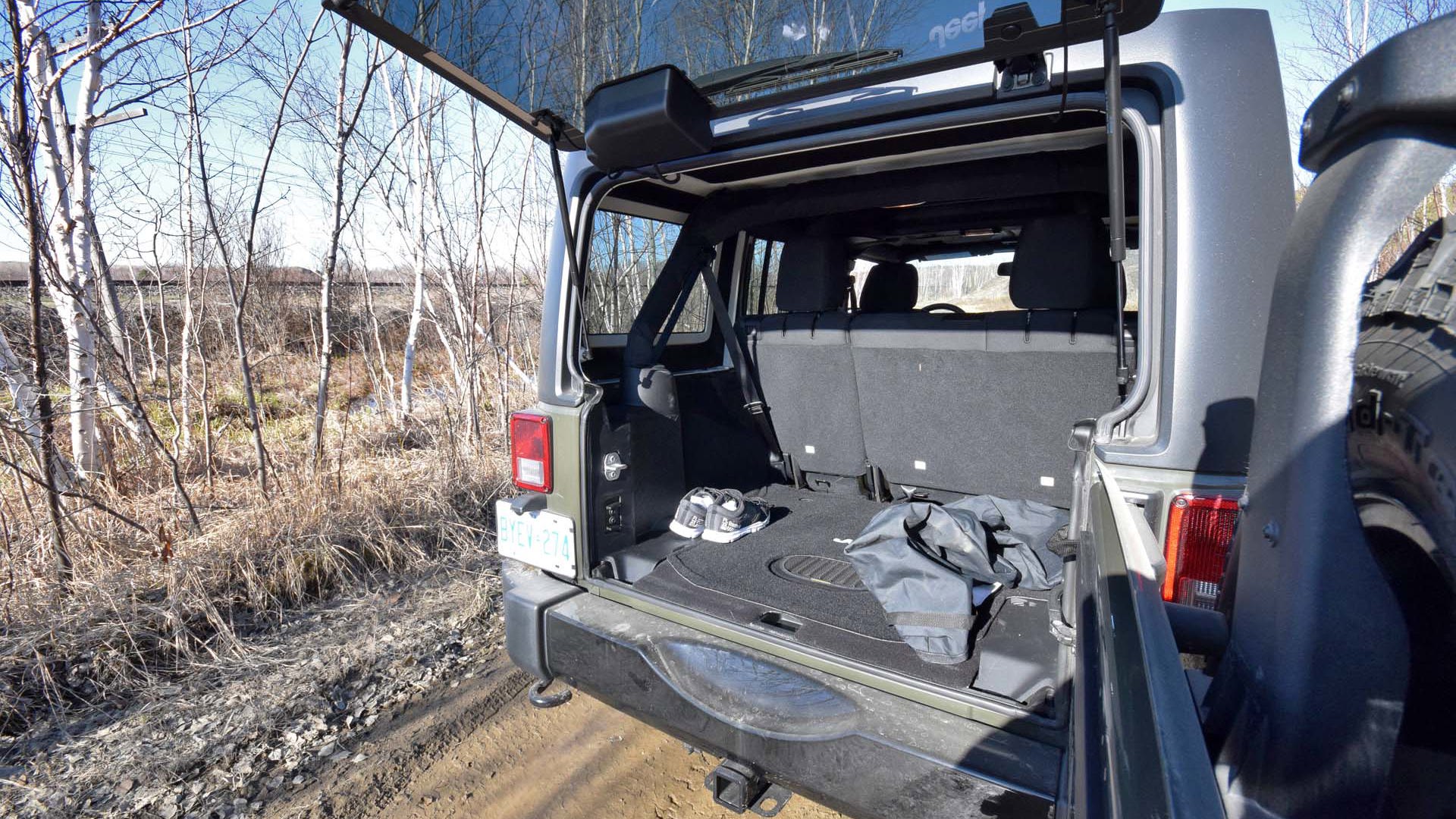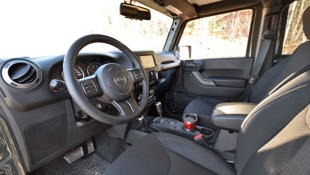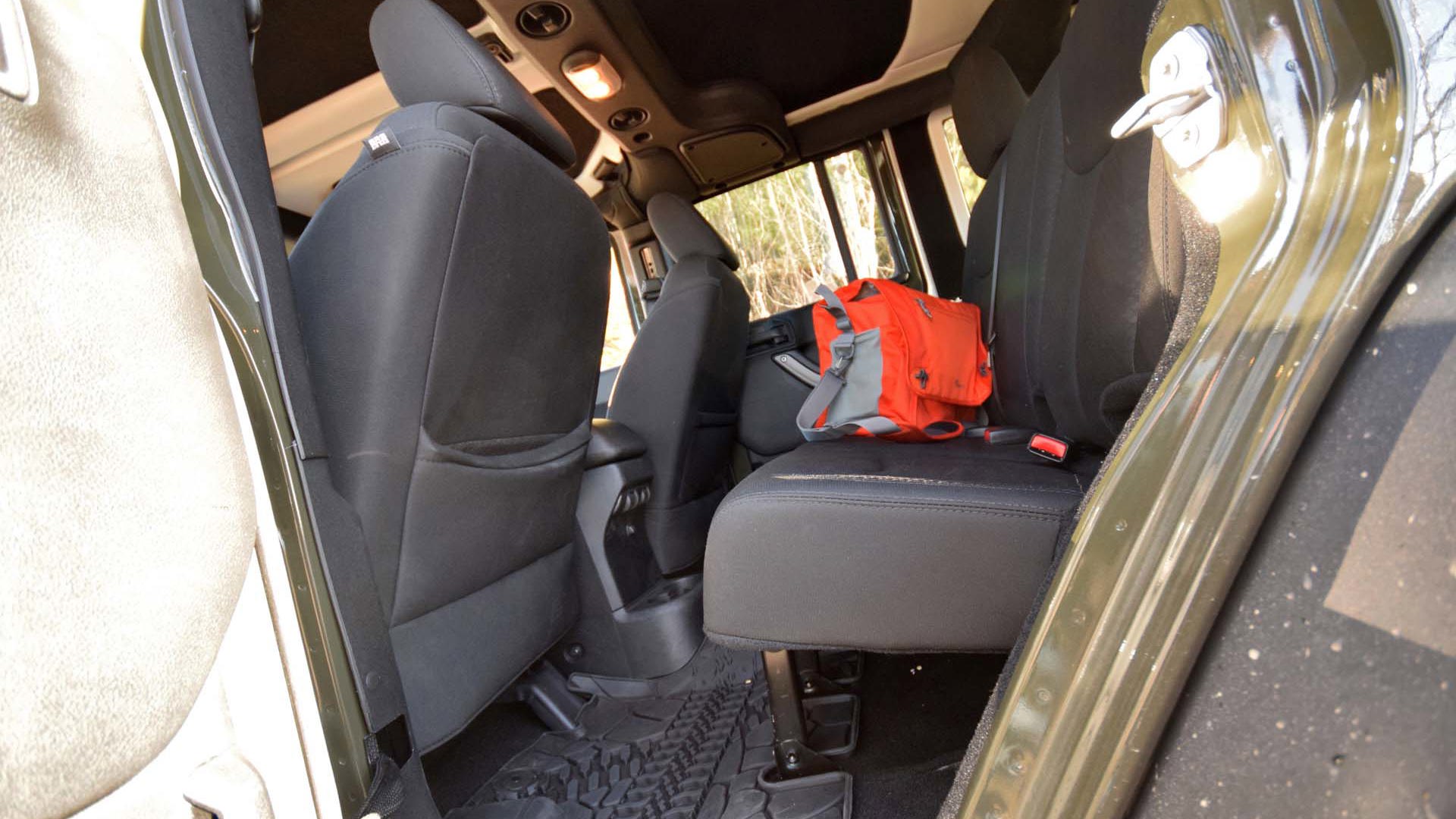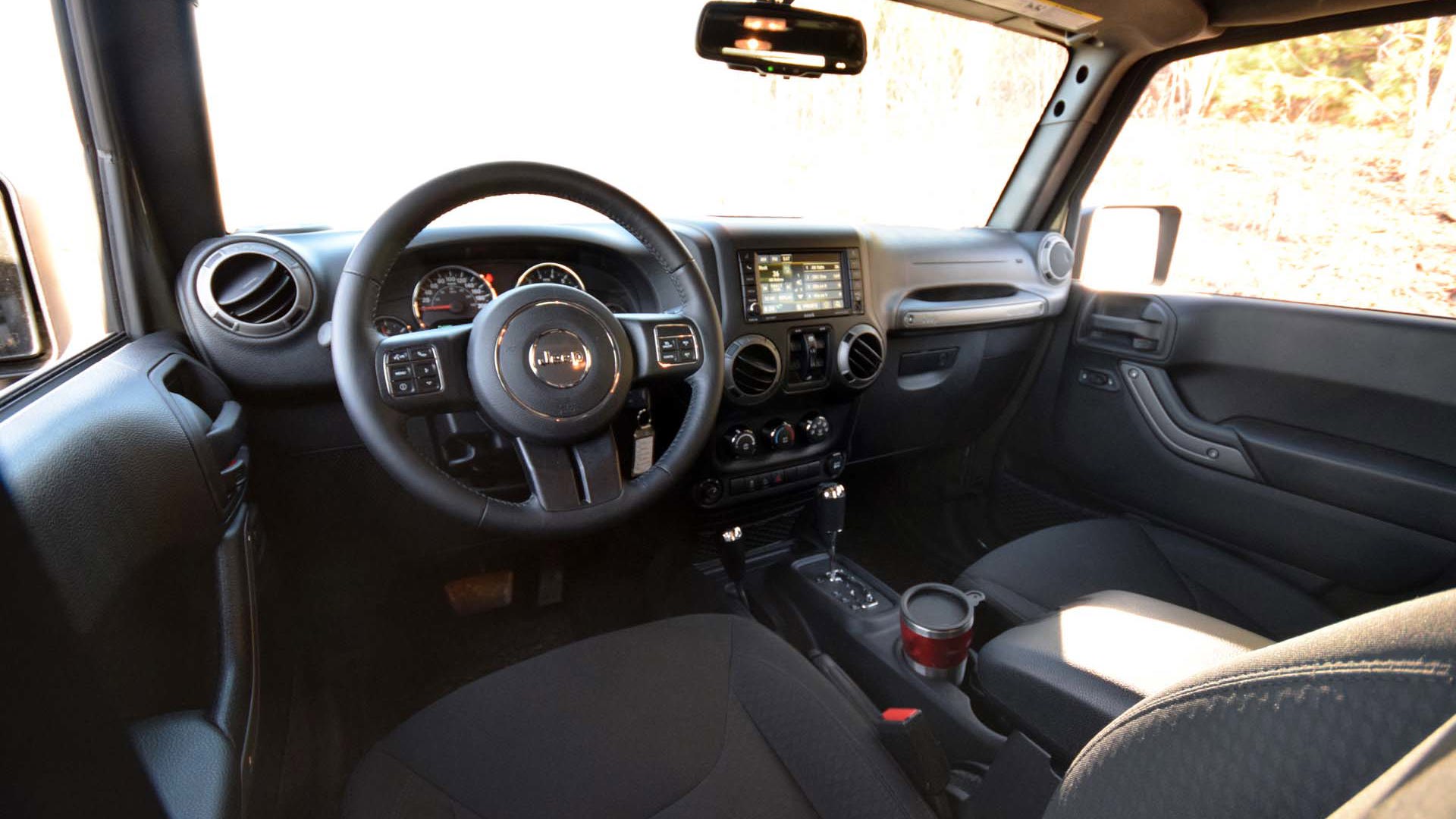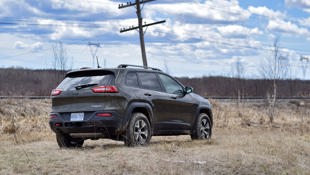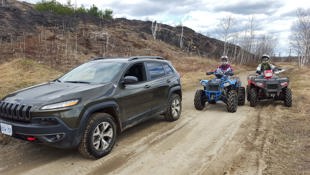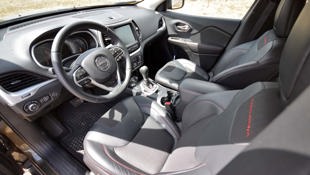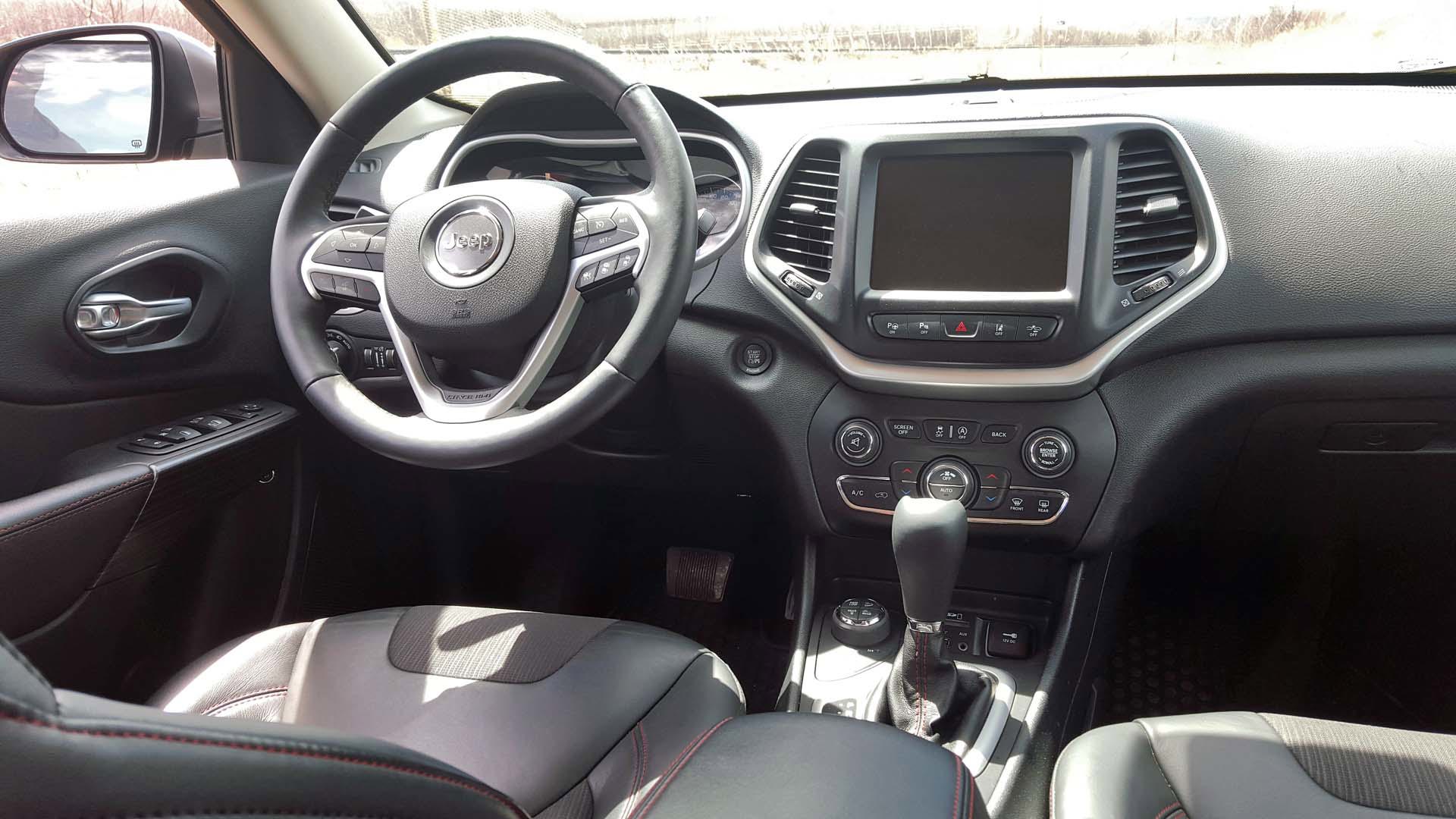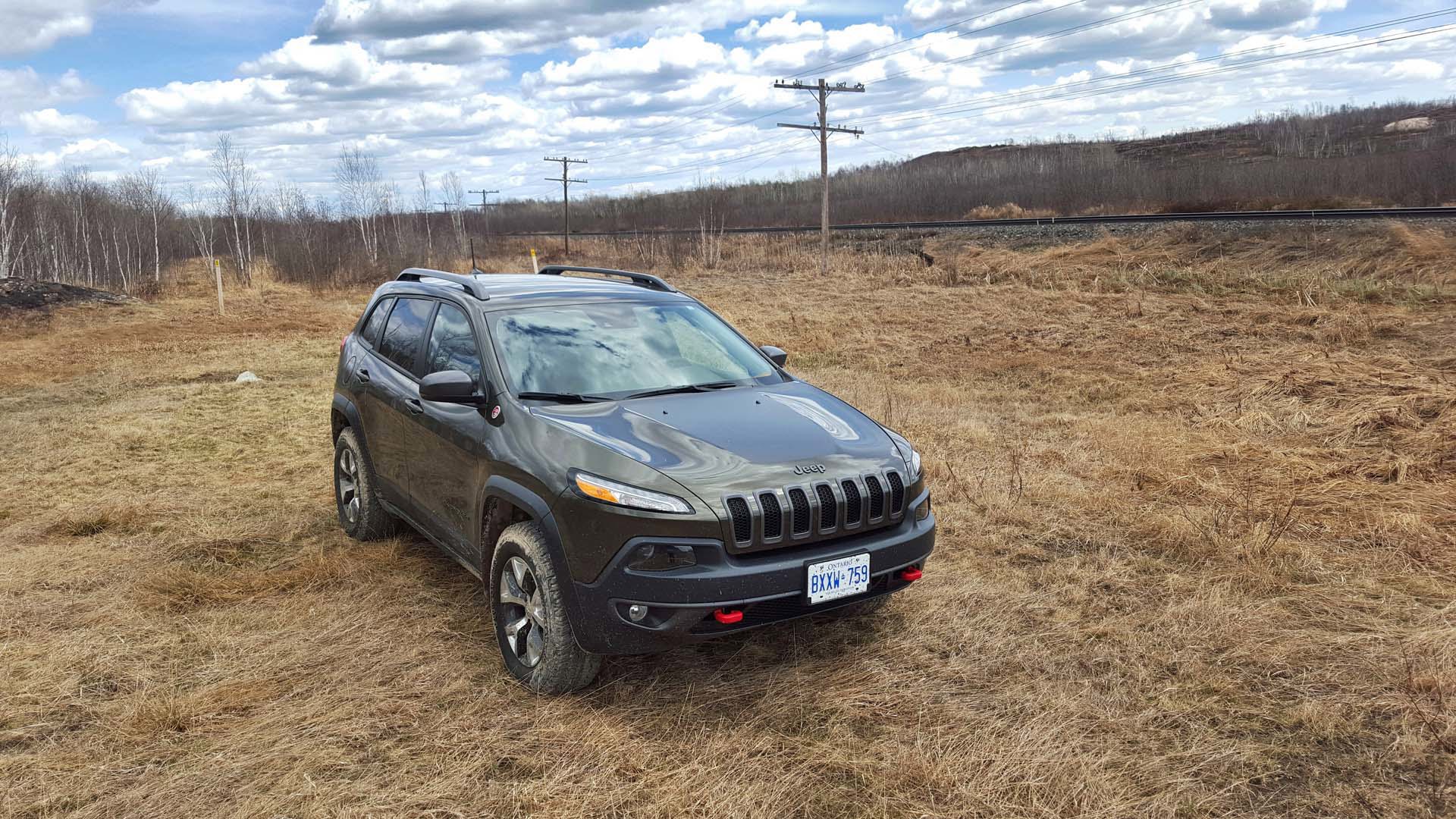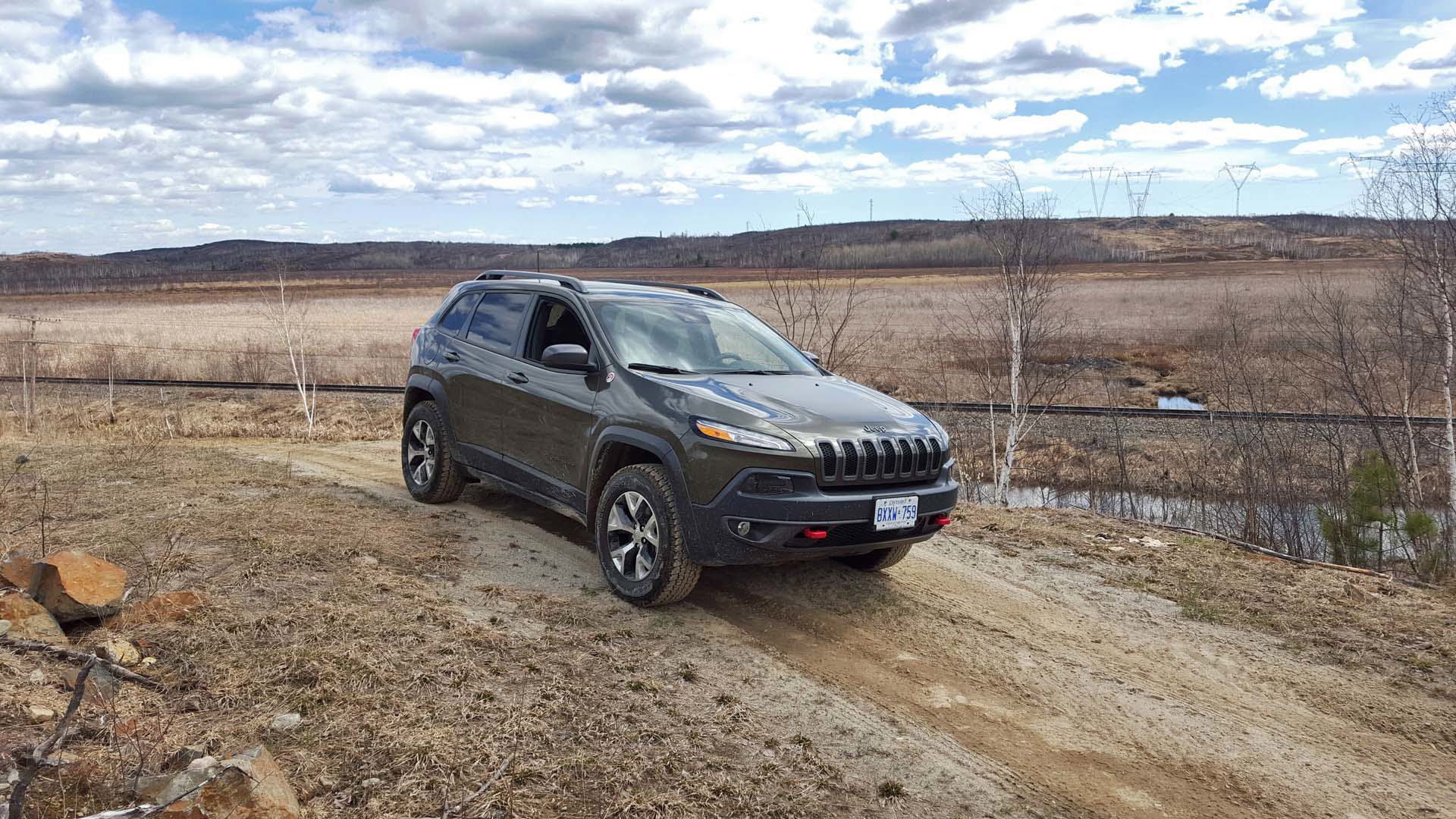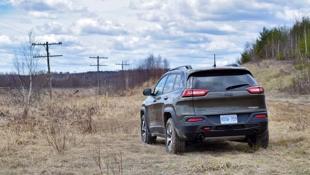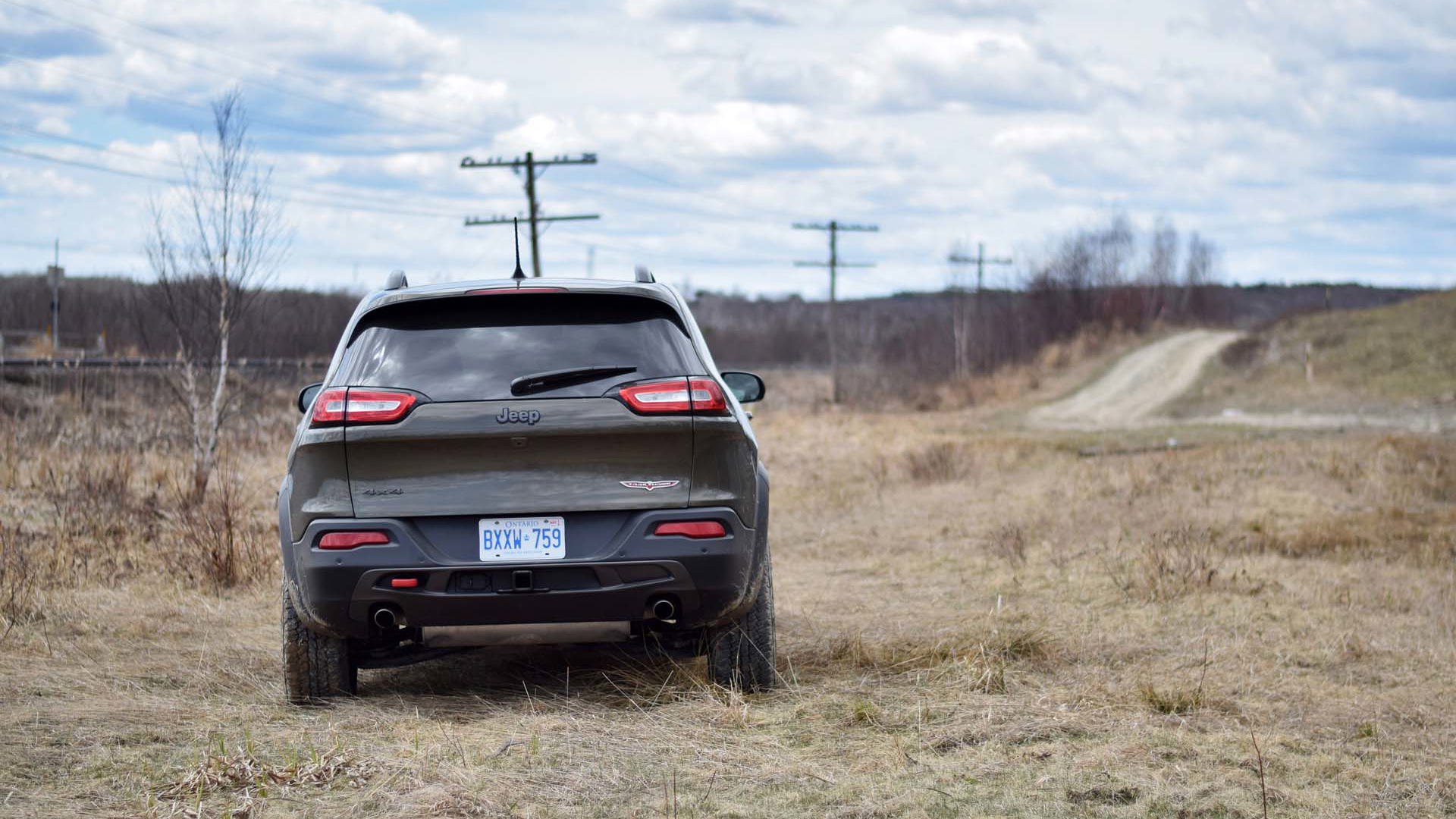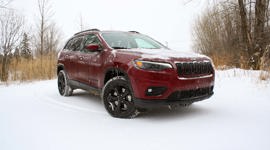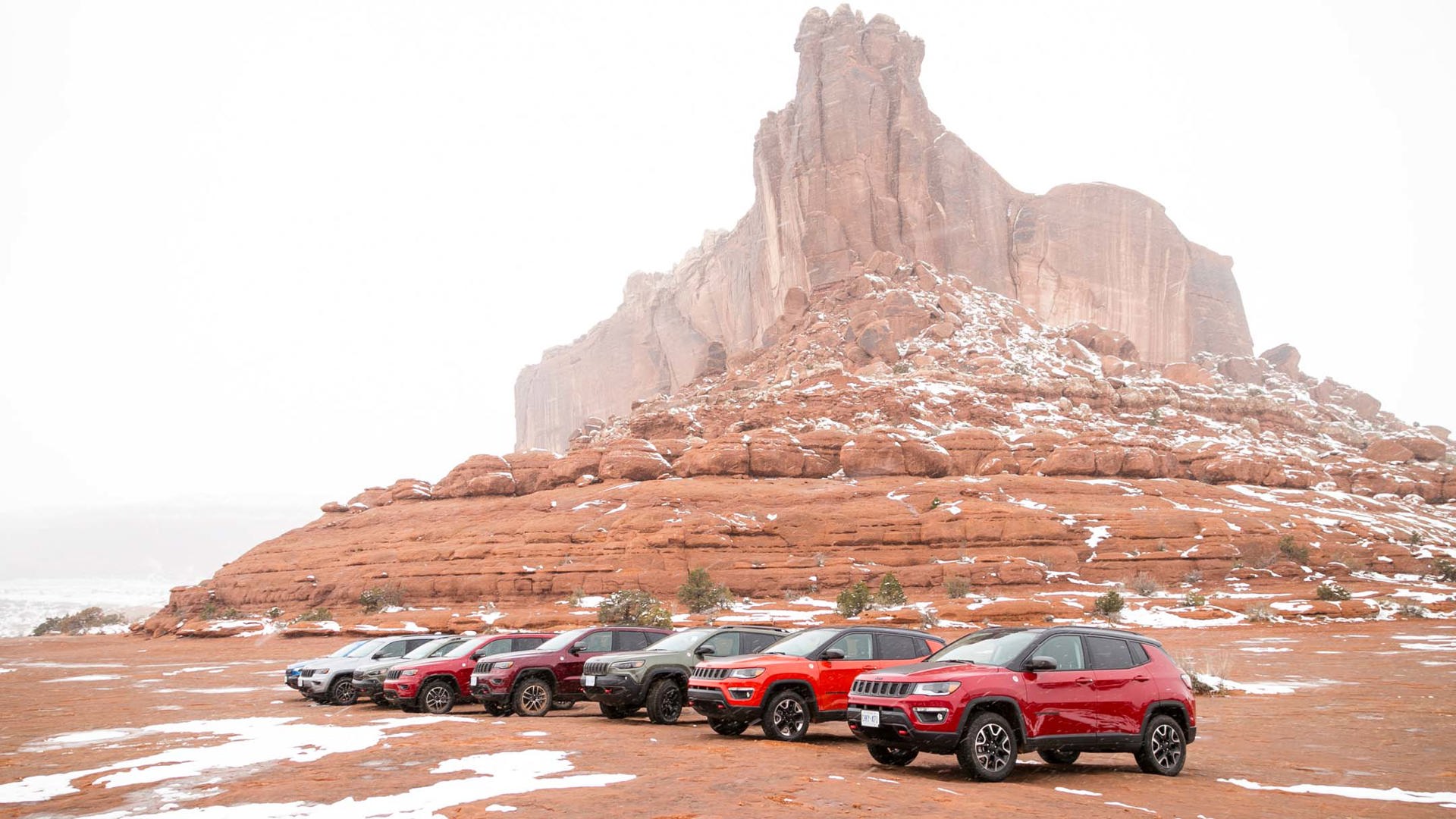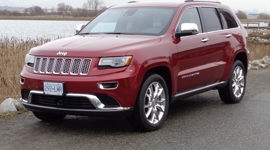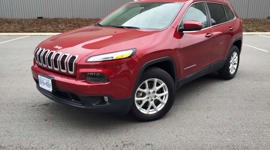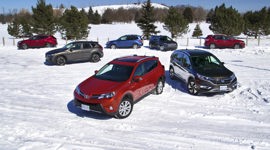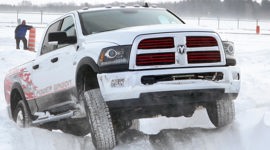Comparison Data
|
Base Price
$37,385
|
$33,695
|
|---|---|
|
Optional Equipment
$5,100
|
$5,105
|
|
A/C Tax
$100
|
$100
|
|
Destination Fee
$1,795
|
$1,795
|
|
Price as Tested
$44,380
|
$40,695
|
Two Jeeps, two ways! Today’s fun comparison highlights the similarities and differences between two of Jeep’s most capable mid-$30,000 off-roaders: the hot-selling Cherokee Trailhawk, a versatile off-roader designed for your 9-5, and the Wrangler Willys Wheeler, which combines numerous off-road hardware tweaks into a high-capability, low-cost mud-slinger for thousands less than the top-dog Wrangler Rubicon.
Here are two machines that are Trail-Rated, priced similarly, ready for adventures over various mucks and turfs, and which pack more capability than many owners will ever use. They’re both very similar, and very different, at the same time.
Which one is best? That depends on how you’ll use it, and what you’ll use it for. Here’s the sticky.
2016 Jeep Wrangler Willys Wheeler
The Gist
Built on Wrangler’s Sport package, the Willys Wheeler upgrade commands $2,900 in exchange for a full suite of off-road hardware – including Rubicon-spec shocks, a Dana locking rear differential, rock rails, Mud Terrain tires and more. Base-for-base, in four-door Unlimited guise, Willys comes in some $4,000 less than a Rubicon. That’s plenty of dinero left for a healthy trip to the Mopar catalog, or a few sick-ass light-bars and some other goodies. Look for two or four doors, standard four-wheel drive and six-speed stick, and a standard convertible top – making it a bit of a family adventure sports car.
Interior and Features
Everything you need, nothing you don’t: That’s the Willys Wheeler mantra when it comes to accoutrements. If you haven’t visited a Wrangler lately, the added premium materials, effective use of contrasting colour and texture, and abundance of graphical Easter Eggs that nod to the Wrangler’s heritage will delight. The tester packed the premium Alpine stereo (highly advised), and offered full power accessories, cruise, steering-wheel mounted controls, and Bluetooth. Entry and exit are a bit clumsier than the Trailhawk, with doors that aren’t step-hinged, and a hop up or down required to board and exit. Rear seat accommodations can be cramped around the craniums of taller adults (thank the roll bar), though the fold-flat rear seats and box-shaped cargo hold team up for generous cargo hauling, especially if you’ve got your gear packed into square bins. Drivers sit up high, with a commanding forward view from behind a thin dash.
On Road
Keeping context in mind is important when reading a Wrangler review: this is an off-roader that can tackle highway use, and not vice versa. Many Wrangler drivers happily accept a ride that’s often rigid, jouncy and jarring – though relatively compliant on smooth highways. Soccer moms will find it rough, while enthusiasts love how it feels tough, durable and truck-like. The Mud Terrain tires are quieter than expected, especially since they wouldn’t look out of place on a piece of landscaping equipment. Still, Wrangler’s wind noise levels at highway speed are huge. Outward forward visibility (using your actual eyeballs) is the better of the two, though, at a similar price point, Trialhawk has a full network of safety sensors to compensate for reduced manual outward visibility. Both are light in the steering department and easy to park, though ultimately, Wrangler falls far behind Trailhawk for handling, noise levels, at-speed stability and overall handling precision.
Off Road
Confidence is the name of the game. Notably, the Mud Terrain tires employ jagged sidewall treads, enabling escaping of even greasy mud ruts, should you get sucked in. The rear locking differential kicks in smoothly, no input needed, should the rear tires start running out of bite. Using two-wheel drive with the locking Dana rear axle and Mud Terrain ties, Wrangler Willys has more traction on offer than any number of soft-roader cute-utes, without even engaging its four-wheel drive.
Then, a manly lever-tug calls 4-HI into action, doubling traction. The 4-LO range is another tug away, for full traction, with more climbing and pulling power. Switching modes is slower and more labour-intensive than the dial selector in the Trailhawk, but a more positive action results. Ground clearance, and approach and departure angles are all generous, and in cases where they aren’t, skid plating and rock rails versus muck and turf and rocks is the result. With Wrangler Willys, there’s no oil-pan roulette on rough terrain.
Most notable? The off-road ride quality. Surfaces, mostly rocky in nature, which coax harshness, noise and a considerably more delicate feeling from beneath the Trailhawk, don’t faze the Willys. Though the off-road ride can become hilariously jouncy at times, at no point does Wrangler ever feel or sound like you’re hurting it – and that’s confidence you can take to the bank.
Performance and Driveline
Much of the time, Wrangler Willys’ big V6 is lazy, the throttle feels like it’s connected to a pail of coleslaw, and overall responsiveness, partly thanks to the five-speed automatic transmission, is on par with a hung-over teenager at 8 am. That is, unless you give the throttle a proper smasheroo, where it downright hauls ass thanks to the better part of 300 hp. Most of these horses prefer to hide in the background most of the time, but it’s nice to know they’re there, even if the engine is a little hoarse at times, and nothing to listen to. Crawling and climbing, it’s all about versatility: and the big Pentastar has torque aplenty for effortless low-speed slogging.
Notably, the Trailhawk offers the smaller 3.2 L V6 and nine gears (four more than Wrangler). It’s got the sweeter sounding, more responsive under-hood setup. Wrangler highway cruising mileage landed at around 12.3 L/100 km on my watch, towards a test average of just over 15 L/100 km, which is expectedly thirsty.
Final Thoughts
This machine is the best match for an enthusiast shopper, aspiring or otherwise. Wrangler is tougher on fuel, considerably noisier, and full of foibles – though it feels considerably more durable and solid in the rough stuff, more confidence-inspiring on a purely mechanical level, and a more serious overall package in the dirt. There’s lots to be said for its standard-equipment convertible roof and six-speed stick, too. I actually have friends actively cross-shopping a Willys against a Mustang Convertible as a fun family weekend-adventure machine. Though the Trailhawk is a nicer machine to drive the majority of the time, when absolute confidence is the priority in an off-road setting, as well as a healthy dose of fun-in-the-sun, Willys Wheeler is the one.
Overall Value
Very impressive, and even more so if you’ll actually use the Wrangler Willys Wheeler for its intended purpose.
2016 Jeep Cherokee Trailhawk
The Gist
This is the top-line Cherokee variant where off-road capability is concerned. With low-range gearing, a locking rear differential, gnarly all-terrain tires, a lifted suspension, skid-plates, recovery hooks and high-clearance bumpers, it adds an unheard-of level of equipment to an already capable crossover, and creates the one of the most adventure-ready CUV’s anywhere in the process. CR-V? RAV4? Escape? Forget it: those guys would be on a speed-date with a smashed-in floor-pan tackling the sort of terrain the Trailhawk is built for. Here’s another niche Jeep product, for the shopper after top-line on-road manners combined with off-road capability that leaves virtually all competitors in the dust.
Interior and Features
Where Wrangler’s cabin is a well-updated take on a long-lived design that’s simple, pure and utilitarian, Cherokee Trailhawk’s cabin is nearly posh by comparison. Access is a cinch: just slide sideways into your seat. The outward visibility and driving position aren’t as commanding, though a full array of safety radar and cameras keeps drivers well-apprised of their immediate driving environment.
Seats are chunky, supportive and comfortable. Trim and accenting gussies up the cabin with contrasting textures and colours, and without looking overdone. A giant central command screen houses one of the market’s best infotainment systems, a big advantage over the unit in the Willys, which is a warmed-over copy of the very first touchscreen ever installed to a Jeep. There’s a large, full-colour computer in the instrument cluster too.
In all, Trailhawk is more generously appointed with feature content, at-hand storage, connectivity and recharging implements, and creature comforts. It also feels more car-like from the driver’s seat, and though the cabin is less rugged and backwoodsy, it’s considerably more high-tech, modern and accommodating.
On Road
Welcome to the easiest part of my comparison test! On the road, there’s nothing in it: Trailhawk is more comfortable, more compliant, has notably more precise steering and brakes, and is light-years quieter than the Wrangler. It’s no more difficult or uncomfortable to drive than a Honda Accord. Where absolute off-road capability turns in compromises in the Wrangler, Trailhawk’s off-road prowess comes with near-nil compromise when you’re rolling on pavement.
Most notable? It easily soaks up bumps and whumps that see the Wrangler Willys handle like an inflatable bouncy castle. Under the skin? It’s car-like vs truck-like, and the differences in on-road ride quality and handling between this pair demonstrate the reason the market shifted to crossover SUV’s in the first place. Note that specifying a Cherokee Trailhawk results in a modest but noticeable degradation of on-road ride quality, comfort, and suspension noise levels, compared to a standard-kit Cherokee.
Off Road
Where Willys confidence is imparted most strongly through its hardware, electronic assist systems are front and centre in the Trailhawk. Use of a small and simple console, to call items from Trailhawk’s considerable off-road toolkit into action, suits it well to novice off-roaders. Twist the dial into the appropriate terrain mode, with Rock, Mud, Sand, Snow and others all on offer. Click for low-range when needed. Another click locks the rear diff. Other clicks engage the downhill assist control or Selec-Speed system, the latter working like a sort of off-road Cruise Control (a la Toyota Crawl Control) to hold your speed steady at as little as 1kph while you focus on steering and keep your feet flat on the floor.
It’s absolutely more capable than a typical soft-roader cute ute: climbing, thanks to the low-range gearing, is a cinch, even up rocky and very steep hills. The Destination tires are beefy, chunky, and deal well with rocks, and even the sort of sloppy, peanut-buttery muck that tries to steal your footwear if you’re walking through it. Still, clearance reigns supreme in the Wrangler: various boulders on the same trail that the Wrangler passed over noiselessly tickled the Trailhawk’s skid plating implements. In numerous situations, your writer definitely appreciated the Trailhawk’s unique, high-clearance bumpers, however.
And though Trailhawk’s advanced arsenal of electronic assists are massively handy and confidence-inspiring, the near-constant noise and harshness from the suspension on rough terrain isn’t. Where Wrangler feels solid, dense and durable regardless of what’s passing beneath, Trailhawk’s more complicated, car-like suspension system often becomes noisy, feels sloppier, and even sends vibrations back into the cabin through the floor and steering, at times. It’ll go just about anywhere, but doesn’t match the Wrangler’s feel of durability in the process.
Performance and Driveline
The Cherokee’s 3.2 L V6 is a sweetheart. Happy to be driven gently or hard, it sounds smooth and eager when pushed, operates with near invisibility when driven gently, and works beautifully with the nine-speed transmission, once said transmission’s computer brain figures out your driving habits after a few hundred kilometres. Fuel mileage smokes the Wrangler, landing at 11.3 L/100km overall, in virtually identical driving on virtually identical routes. In all, Cherokee’s powertrain feels more eager, sounds more pleasing, operates with more refinement, and represents a notable but unsurprising improvement in fuel economy over the Willys.
Final Thoughts
Off road, Trailhawk impresses most when compared to other crossover models, and less so when compared to the Willys Wheeler. The electronic driver aids, on-road and off, are impressive, effective, and well-tuned. The off-road hardware upgrades are comprehensive. But with more toughness and confidence coming from the Willys in the sort of driving that both machines are meant for, those considering one of these models for frequent actual off-roading should have minimal issue with the Wrangler’s compromise. Of course, I know at least two people who have bought Trailhawk models and refuse to off-road them. Spending thousands on overkill like this is something many marketing departments would kill for.
Overall Value
If you’ll do most of your driving on the road, Trailhawk is the stand-out value here. It’s better to drive most of the time, has more features, a nicer cabin, more at-hand storage, and a sweeter, more eager powertrain. And if you don’t need collision warning, a self-parking system, and other driver safety assist electronics, you can cut about $1,200 out of the as-tested price.
For all but the most avid off-roaders, and especially those requiring flexibility and on-road comfort not compromised by off-road capability, it’s a near no-brainer – provided you’re accepting of some excessive suspension noise when the going does gets rough.
Which one for me?
Decision time. Which machine would your writer spend his $35,000 on?
A note, first: I drive a Dodge Viper – so I’m not easily fazed by operation of a vehicle that’s noisy, somewhat compromised and difficult to keep full of fuel, in exchange for some high-capability cool factor.
And though I know I’d long for the Trailhawk on highway drives and at the gas station, the Wrangler Willys Wheeler’s availability with a manual transmission and convertible roof, as well as superior performance in the sort of driving Jeeps are meant for, really seal the deal for me.
I’ll take a four-door, with the stereo, and the stick, in black, please.
